

Promoting Healthy and Safe Travel
The ISTM is dedicated to promoting healthy, safe, and responsible travel and movement of all people crossing borders by facilitating advancement of epidemiological surveillance, research and education.
Who We Are & What We Do
The ISTM is the largest organization of professionals dedicated to the advancement of the specialty of travel medicine. Focused on the prevention and management of health problems related to international travel and migration, members include physicians, nurses, pharmacists and other health professionals from academia, government and the private sector. ISTM invites all who are interested in travel medicine to join and participate in the advancement of this field.
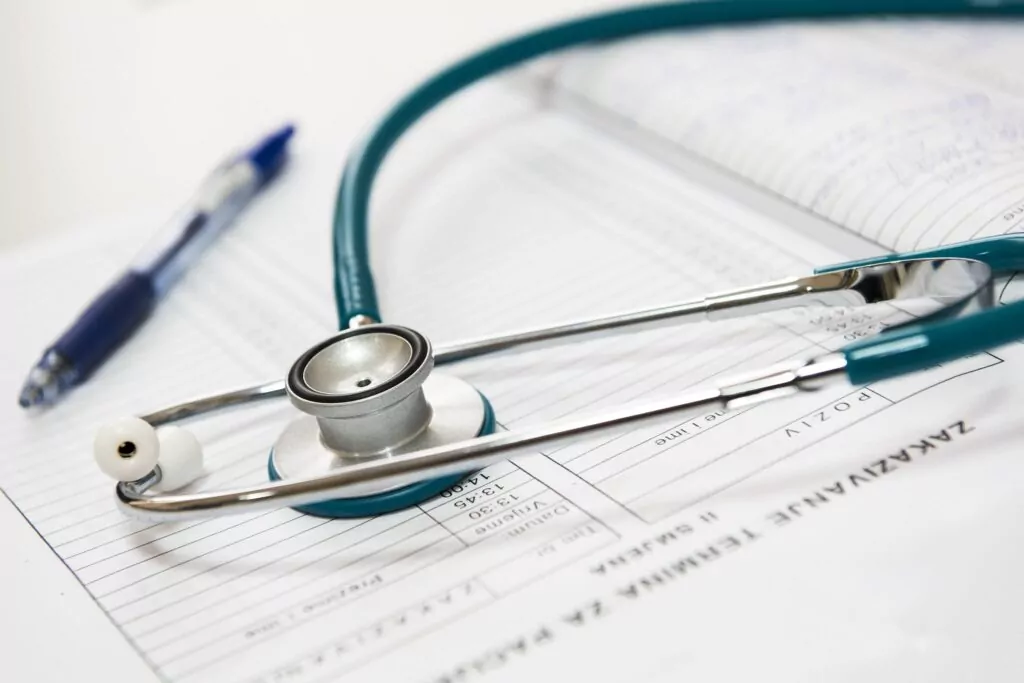
24 April 2024
09:00 – 10:30 AM ET UTC-04
Webinar: Ixodes Tick-Transmitted Diseases in Europe and North America: Overview and Control Strategies
* We appreciate the educational grant from Pfizer in support of this webinar.
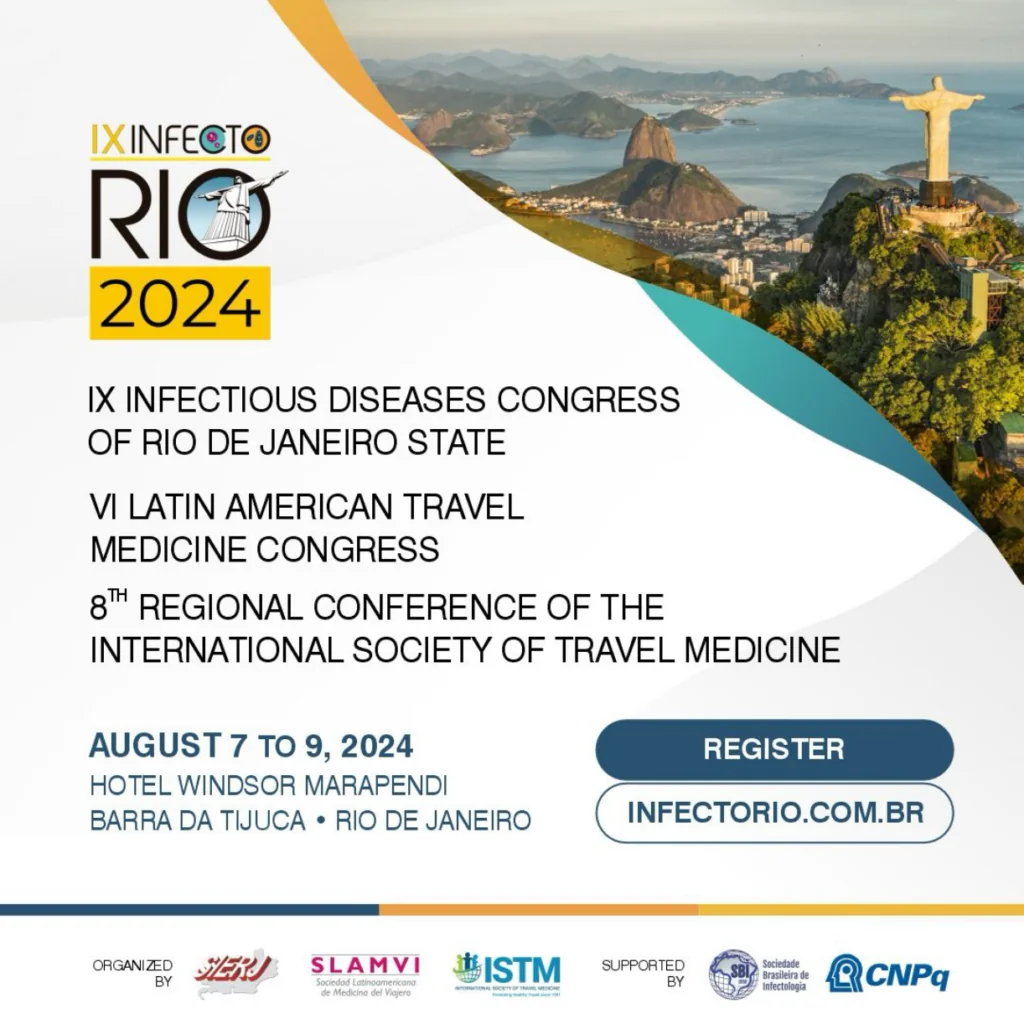
7-9 August 2024
Rio De Janeiro, Brazil
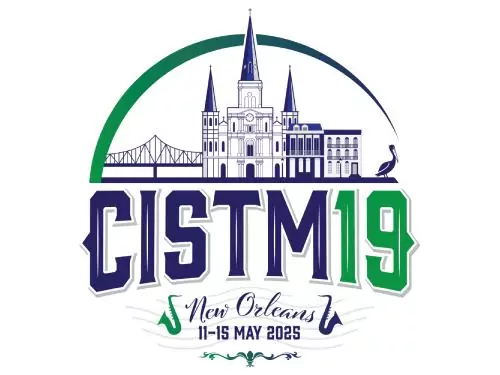
11 May 2025 – 15 May 2025
New Orleans, In-Person and Virtual

Global Clinic Directory
ISTM Member Clinics offer pre-travel immunizations, counseling and medicines to help protect those traveling internationally. Most clinics also provide care to travelers if needed upon return.
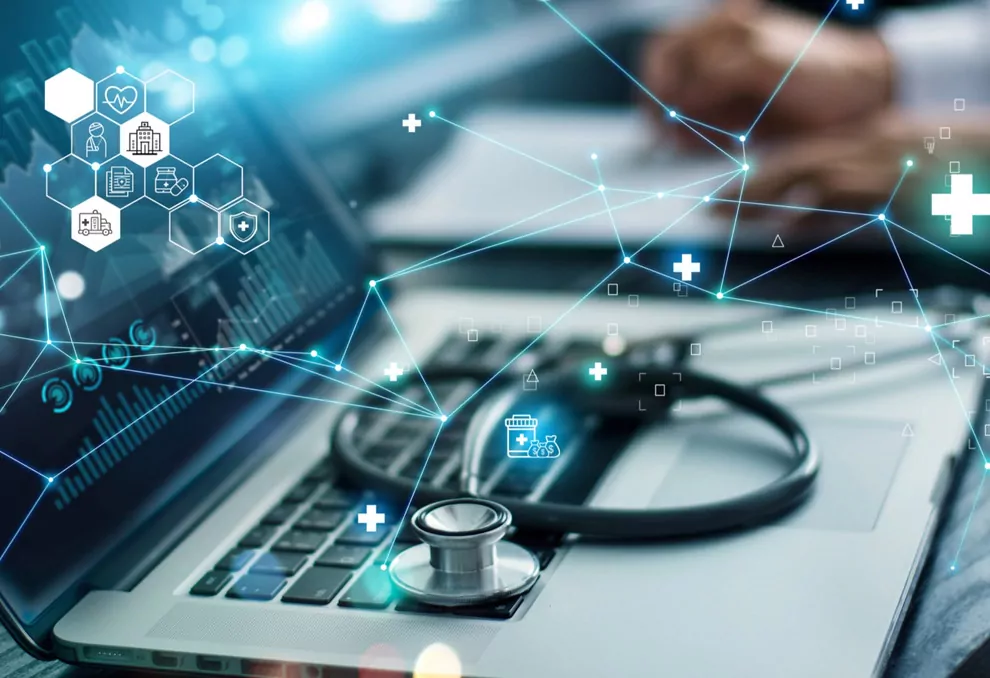
Learning @ ISTM
Learning @ ISTM is the destination for all ISTM educational offerings including Webinars, Video Recordings, Resource Library, Travel Medicine Review and Update Course and more.
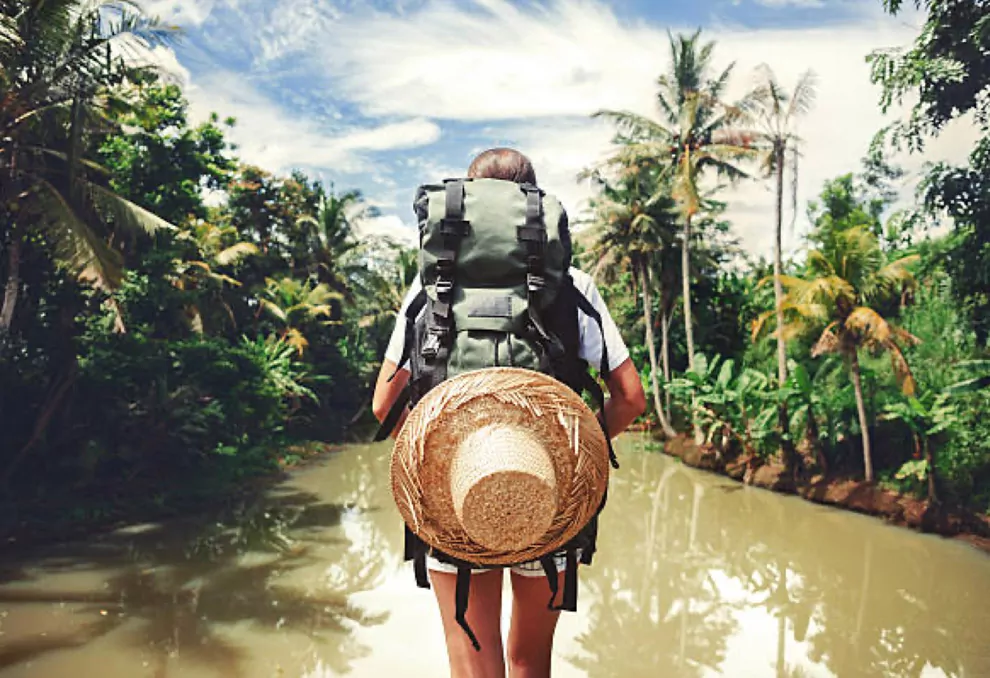
Traveler Resources
ISTM offers a variety valuable resources for international travelers.
Research & Collaboration

The Journal of Travel Medicine
ISTM’s Journal of Travel Medicine (JTM) is an online only publication, available to all ISTM Members as an exclusive benefit. JTM transports readers to challenging areas in travel medicine with up-to-date research and original, peer-reviewed articles.
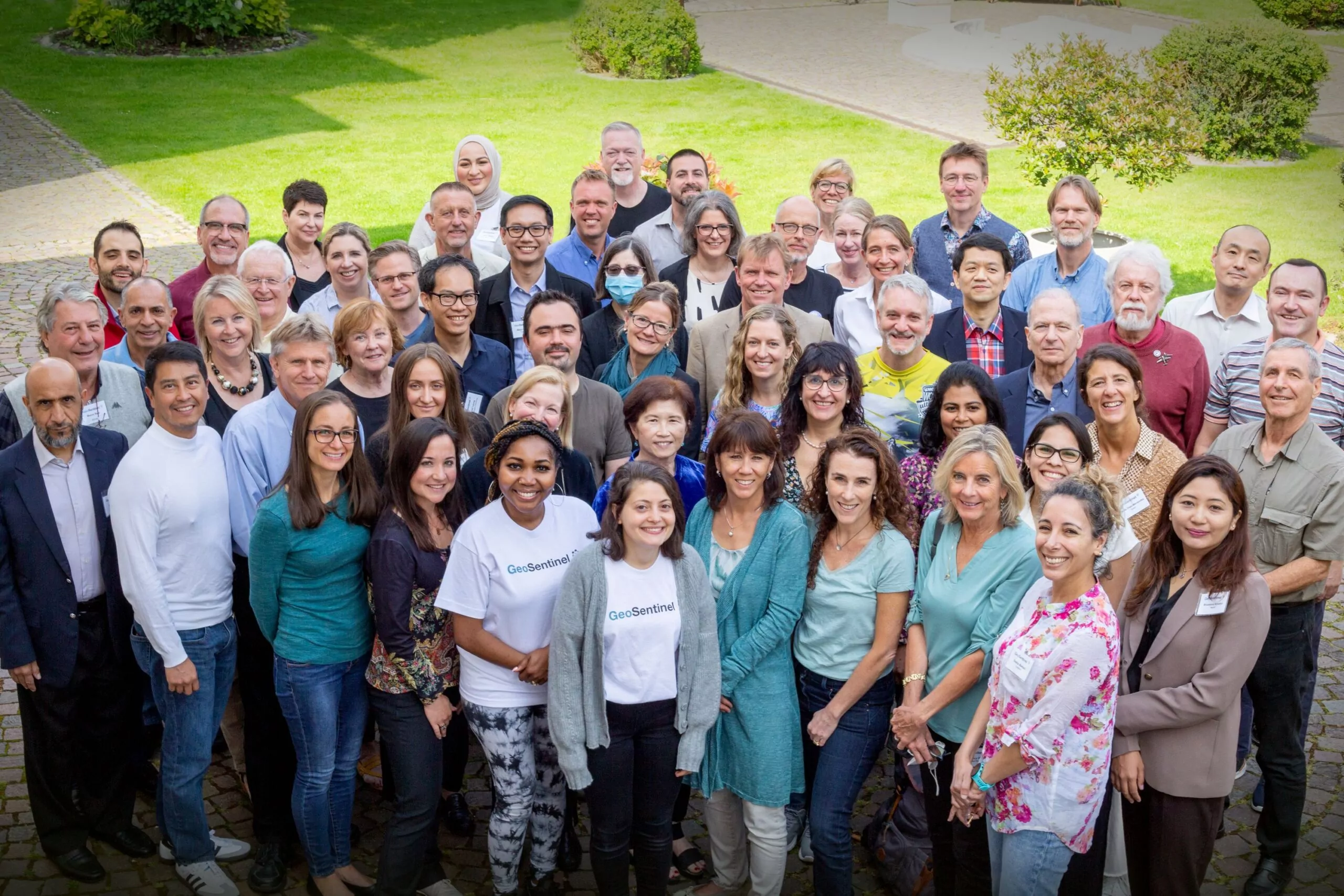
GeoSentinel
GeoSentinel is a worldwide network of experts and clinical sites specialized in tropical, geographic, and travel medicine. The GeoSentinel platform combines research with near real-time surveillance of ill returned travelers and migrants to further our understanding of the epidemiology of outbreaks, emerging pathogens, and the global movement of infections across international borders.
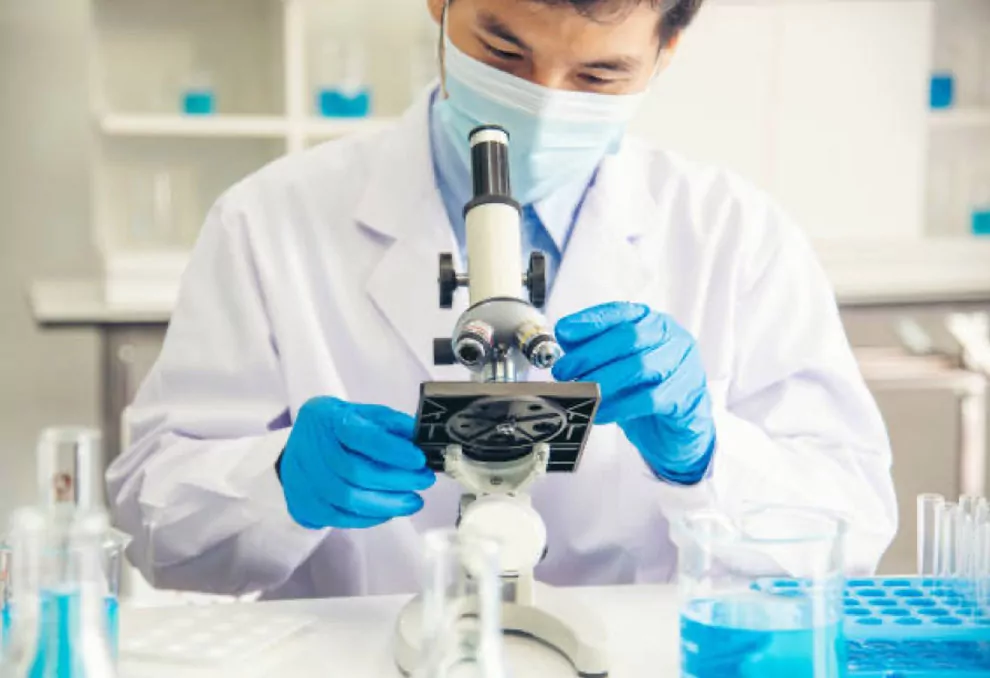
ISTM Research Awards
ISTM, with support from GeoSentinel Foundation, offers research awards for projects with the potential to change clinical practice. Every year, grants are awarded to cutting-edge applications, that would assist researchers to apply to other agencies for more substantive research grants.
- Medical Departments & Centers
- Infectious Diseases
Travel Medicine Clinics Overview

A visit to a Mayo Clinic travel medicine clinic before you depart on an international trip can help ensure a safer, smoother experience.
If you're planning a trip overseas, make one of your first stops a consultation with specialists in the travel medicine clinics at Mayo's campuses in Arizona, Florida and Minnesota. Availability of services may vary among locations. Please confirm when you request an appointment.
You meet with a travel medicine specialist who is knowledgeable about current health risks worldwide and who will promote safe and healthy travels by offering counseling, recommendations, vaccinations, prescriptions and, if needed, a referral to another expert for complex medical conditions.
Virtual visits
You might be eligible for virtual pretravel consultations. If you're interested in this option, talk with the patient appointment specialist when you contact us to schedule an appointment.
COVID-19 and international travel
International travel has become more complex due to the COVID-19 pandemic, and some countries have exit and entry requirements. Your travel medicine specialist will be able to help you prepare for these requirements so that you have a smoother travel experience.
Before your trip
Schedule an appointment for a pretravel consultation with a Mayo Clinic travel medicine clinic well before you depart so the travel medicine specialist can help you prepare. Ideally, this appointment would occur as soon as travel plans are established and at least two weeks — and preferably 4-8 weeks — before departure. When requesting an appointment for pretravel consultation, be prepared to inform the patient appointment specialist of the following:
- All countries being visited
- Dates and duration of travel
- Any unusual circumstances
At or preferably before the appointment, you will want to provide copies of all available immunization records (including the International Certificate of Vaccination, commonly referred to as the yellow card). Doing so will expedite your clinic visit and may decrease the number of vaccines you are advised to receive.
Your in-depth pre-travel consultation may include:
- A country-by-country assessment of all health risks specific for your travel itinerary, such as exotic infectious agents, altitude sickness and heat exhaustion
- A review of your medical and immunization history profile with advice for health promotion and illness prevention
- Advice for the high-risk traveler
- Immunization recommendations, counseling and administration of vaccines to prevent illnesses
- Vector precautions counseling
- Malaria prevention counseling, with prescriptions if needed
- Traveler's diarrhea counseling for prevention and self-treatment, with antibiotic prescription if needed
- Identification of health resources in the countries you'll be visiting
- Counseling on travel-related risks such as altitude sickness, with preventive prescriptions if needed
- An opportunity to ask questions about the unique health and safety concerns for your travel itinerary
You will leave your travel medicine clinic appointment with much helpful and up-to-date information.
After your trip
- Depending on where you're going and for how long, the travel clinic may recommend a routine follow-up evaluation after your return.
- If you return sick, the travel clinic staff members are Mayo Clinic infectious diseases experts who provide comprehensive post-travel consultations for evaluation and treatment of travel-related illness, including parasitic and other diseases common to tropical regions but uncommon in the United States.
- Mayo Clinic Travel Medicine Clinic
- 5881 E. Mayo Blvd. Phoenix, AZ 85054
- Phone: 480-342-0115
- 4500 San Pablo Road Jacksonville, FL 32224
- Phone: 904-953-0774
- Mayo Clinic Travel and Geographic Medicine Clinic
- 200 First St. SW East 6A, Mayo Building Rochester, MN 55905
- Phone: 507-255-7763 (toll-fee)
- Tests & procedures
- Conditions treated
- Specialty groups
- Expertise & rankings
- Clinical trials
- Patient stories
- Costs & insurance
- News from Mayo Clinic
Travel Medicine Clinics
- Request an Appointment
Make twice the impact
Your gift can go twice as far to advance cancer research and care!
Travel Medicine and International Health
Travel medicine and international health is a specialized branch of medicine that focuses on the prevention, diagnosis, and management of health issues related to international travel and global health. It aims to promote the well-being of travelers by providing pre-travel consultations, vaccinations, prophylactic medications, and post-travel care for various travel-related illnesses and conditions.
Related Fact Sheets
Global health and travel-related maladies, outdoor emergencies and injuries, related news.
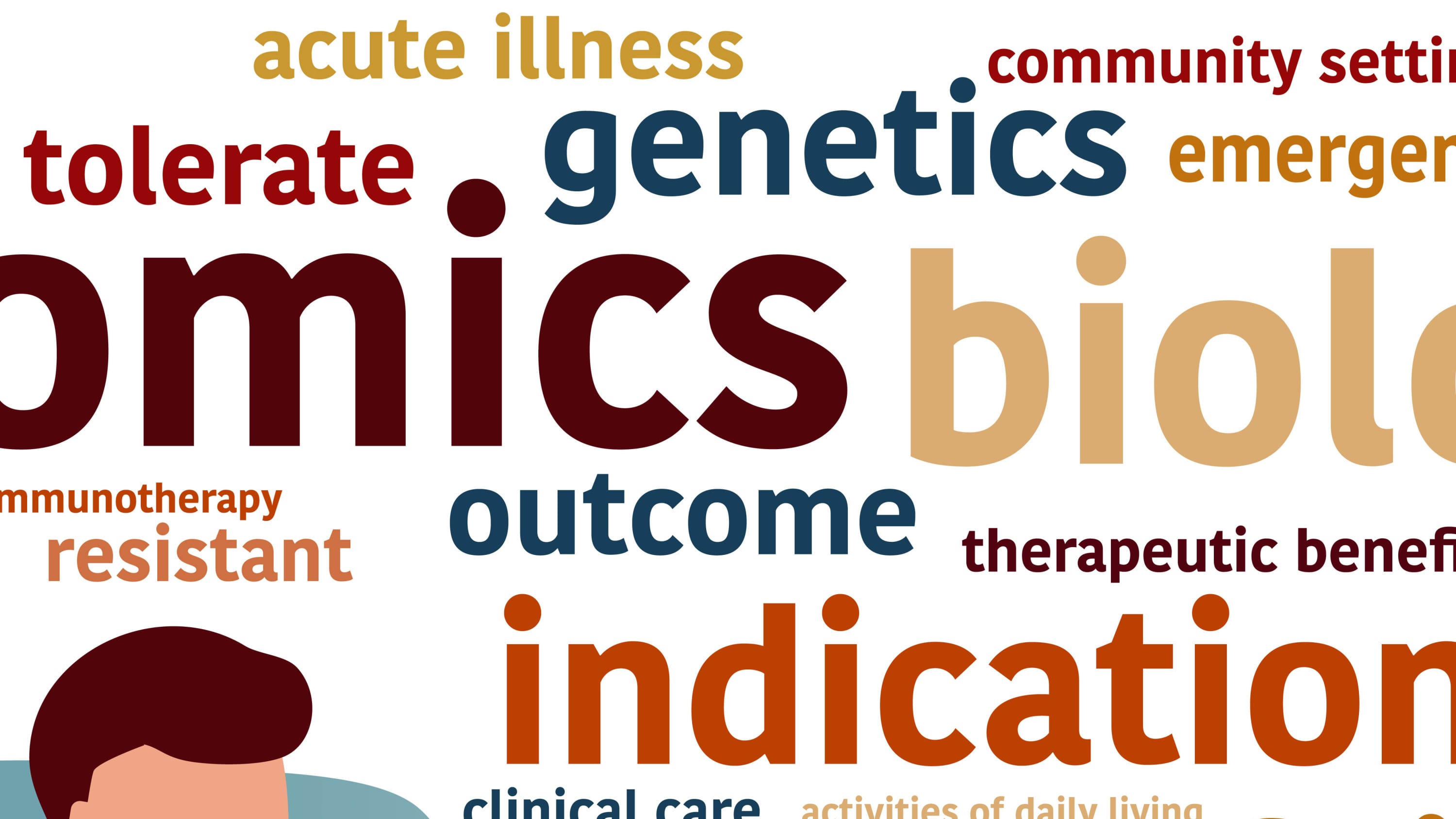
Related Departments
Infectious diseases, internal medicine, orthopaedics & rehabilitation.
- Português Br
- Journalist Pass
Stay healthy abroad: Why you should see a travel medicine specialist before your trip
Mayo Clinic Staff
Share this:

As you get ready to travel to another country, you probably have many details to coordinate and plan. One essential task, depending on where those travels take you, may be to make an appointment to see a travel medicine specialist.
A travel medicine specialist assesses travel-related risks and provides information to ensure your health and safety while minimizing the potential for health-related situations during your trip.
Adding a consultation to your travel to-do list
A consultation with a travel medicine specialist includes discussing travel-related illnesses, risk factors for infectious and noninfectious diseases, required immunizations , health regulations and drug-resistant organisms you may encounter.
It's crucial to schedule a pretravel consultation at least two weeks — and preferably 4 to 8 weeks — before your trip to ensure you get complete protection from any needed vaccinations. When requesting a travel medicine consultation, be prepared to provide information about your trip, including:
- All countries being visited
- Any transportation, accommodation or other circumstances that are out of the usual
- Dates and duration of travel
A travel medicine specialist will review your itinerary before your consultation to identify country-by-country health risks, such as exotic infectious agents, the potential for altitude sickness or heat exhaustion, as well as appropriate vaccinations and possible need for malaria-prevention medications.
Your opportunity to learn about staying healthy abroad
A consultation gives you the opportunity to learn about health risks you may face while you're traveling and once you reach your destinations. Based on your itinerary, the travel medicine specialist may:
- Explain the risks of infection from mosquito-borne illnesses and the steps for protecting yourself. This includes reviewing medications to prevent malaria, which is a potentially life-threatening illness.
- Ensure you receive protection against vaccine-preventable illnesses, such as hepatitis A or typhoid fever , and verify that other routine vaccinations are current.
- Evaluate your overall health for travel and discuss with you how to manage preexisting conditions.
- Give tips for preventing jet lag, motion sickness, altitude illness and blood clots .
- Go over how to prevent and treat traveler's diarrhea , the most common travel-related illness.
- Help you reduce the chance of becoming ill during travel.
- Provide a yellow fever vaccination and an International Certificate of Vaccination, also known as a yellow card, if you travel to a country where the vaccine is recommended or required.
- Review food and water precautions. Contaminated food and water can pose disease risk for travelers, many of which are transmitted via by swallowing or coming in contact with impure water, such as fresh or sea water and swimming pools.
Be sure to ask the specialist any questions you may have about your personal health and raise any safety concerns about your travel itinerary.
Get sick on your trip? Check-in with a travel medicine specialist
Once you return home, a travel medicine specialist also can conduct a comprehensive post-travel evaluation of any illnesses you may have picked up while away, including parasitic infections and other tropical diseases that are rare in the U.S.
No matter the reason for travel — vacation, business, studying abroad, visiting friends or relatives or medical tourism — always be prepared and take steps to ensure your health and safety.
Raj Palraj, M.B.B.S., M.D. , specializes in infectious diseases in La Crosse, Wisconsin .
This article first appeared on the Mayo Clinic Health System blog .
- Mayo Clinic Minute: Can aspirin make your breathing worse? Mayo Clinic Minute: Tips to safely watch the total solar eclipse
Related Articles
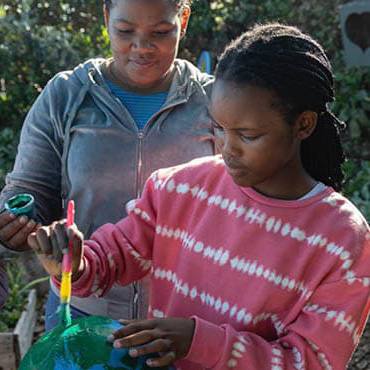

Raj Palraj, M.B.B.S., M.D.
- Infectious Diseases
Recent Posts
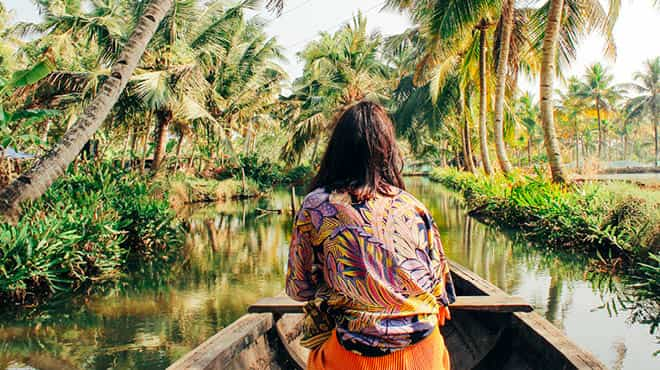
- Behavioral Health
- Children's Health (Pediatrics)
- Exercise and Fitness
- Heart Health
- Men's Health
- Neurosurgery
- Obstetrics and Gynecology
- Orthopedic Health
- Weight Loss and Bariatric Surgery
- Women's Health

Stay healthy abroad: Why you should see a travel medicine specialist before your trip

As you get ready to travel to another country, you probably have many details to coordinate and plan. One essential task, depending on where those travels take you, may be to make an appointment to see a travel medicine specialist.
A travel medicine specialist assesses travel-related risks and provides information to ensure your health and safety while minimizing the potential for health-related situations during on your trip.
Adding a consultation to your travel to-do list
A consultation with a travel medicine specialist includes discussing travel-related illnesses, risk factors for infectious and noninfectious diseases, required immunizations , health regulations and drug-resistant organisms you may encounter.
It's crucial to schedule a pretravel consultation at least two weeks or preferably, four to eight weeks, before your trip to ensure you get complete protection from any needed vaccinations.
When requesting a travel medicine consultation, be prepared to provide information about your trip, including:
- All countries you're visiting
- Any transportation, accommodation or other unusual circumstances
- Dates and duration of travel
A travel medicine specialist will review your itinerary before your consultation to identify country-by-country health risks, such as exotic infectious agents, the potential for altitude sickness or heat exhaustion, as well as appropriate vaccinations and possible need for malaria prevention medications.
Your opportunity to learn about staying healthy abroad
A consultation gives you the opportunity to learn about health risks you may face while you're traveling and once you reach your destinations.
Based on your itinerary, the travel medicine specialist may:
- Explain the risks of infection from mosquito-borne illnesses and the steps for protecting yourself. This includes reviewing medications to prevent malaria , which is a potentially life-threatening illness.
- Ensure you receive protection against vaccine-preventable illnesses, such as hepatitis A or typhoid fever , and verify that other routine vaccinations are current.
- Evaluate your overall health for travel and discuss with you how to manage preexisting conditions.
- Give tips for preventing jet lag, motion sickness, altitude illness and blood clots .
- Review how to prevent and treat traveler's diarrhea , the most common travel-related illness.
- Help you reduce the chance of becoming ill during travel.
- Provide a yellow fever vaccination and an International Certificate of Vaccination , also known as a yellow card, if you travel to a country where the vaccine is recommended or required.
- Review food and water precautions. Contaminated food and water can pose disease risk for travelers, many of which are transmitted via swallowing or coming in contact with impure water, such as fresh or sea water and swimming pools.
Be sure to ask the specialist any questions you may have about your personal health, and raise any safety concerns about your travel itinerary.
What to do if you got sick on your trip
Once you return home, a travel medicine specialist also can conduct a comprehensive post-travel evaluation of any illnesses you may have picked up while away, including parasitic infections and other tropical diseases that are rare in the U.S.
No matter the reason for travel — vacation, business, studying abroad, visiting friends or relatives or medical tourism — always be prepared, and take steps to ensure your health and safety.
Raj Palraj, M.B.B.S., M.D. , is an infectious diseases specialist in La Crosse , Wisconsin.
Related Posts


- Skip to main content
- Skip to Footer
- Find a Provider
- Find a Location
- Schedule Appt
- Calendar of Events
- Career Opportunities
- Graduate Medical Education
- Make a Donation
- News & Media
- Patients & Visitors
- Programs & Services
- Allergy and Immunology
- Balance Institute
- Bariatric Center
- Behavioral Health
- Birth Center
- Cancer (Oncology)
- Cardiac and Pulmonary Rehabilitation
- Cardiology/Cardiovascular
- Cardiothoracic Surgery
- Clinical Trials
- COVID Infusion Center
- Dermatology and Mohs Services
- Diabetes and Endocrinology
- Diabetes Program
- Digestive Health (GI)
- Endocrinology
- Family Medicine - Center for Family Medicine
- Emergency Department
- General Surgery
- GI (Gastroenterology)
- Heart Failure Clinic
- Heart (Cardiovascular Institute)
- HIV Program
- Hospitalist Program
- Imaging (ext)
- Infectious Disease Clinic
- Lab Services
- LGBTQ Community Services
- Lung Cancer Screening Program
- Maternity Services
- Movement Disorders
- Neuroscience and Neurology
- Ostomy Services
- Orthopedics
- Parkinson's Disease
- Primary Care
- Primary Care Traditional
- Primary Care 365
- Pulmonary, Critical Care and Sleep Clinic
- Primary Care Concierge
- Pulmonary Rehabilitation
- Radiation Oncology
- Rehabilitation Services
- Renker Wellness Center
- Rheumatology Clinic
- Robotics Institute
- Sexual Assault Forensic Examiner (SAFE)
- Sleep Center
- Sports Medicine Clinic
- Stroke Center
- Surgery Specialty Clinic
Travel Medicine
- Urgent Care
- Urology Specialty Clinic
- Women's Health (Gynecology)
Our Provider Location
The Eisenhower Travel Medicine Program, led by board certified infectious disease physician, Cyril Gaultier, MD, FIDSA, uses evidence-based treatment and vaccination recommendations for pre-travel consultations set forth by the Center for Disease Control and Prevention (CDC), International Society of Travel Medicine (ISTM) and the California Department of Public Health (CDPH).
The program provides a comprehensive risk assessment for each traveler, which is essential to accurately evaluate their specific health and destination risks. This thorough assessment enables the physician to determine appropriate interventions for their specific itinerary with the goal of minimizing adverse health outcomes.
Vaccinations might also be required and should be personalized according to the individual traveler’s immunization history, travel itinerary, and the amount of time available before departure. Vaccinations are offered on-site by Eisenhower Travel Medicine Program include:
- yellow fever
- hepatitis A
- hepatitis B
- Japanese encephalitis
- mumps and rubella
- meningococcal infections
- pneumococcal infections
- poliomyelitis
- rabies (veterans and adventuraous hikers)
- tetanus, diphtheria and pertussis and varicella.
Prescriptions for additional medications, such as altitude sickness and malaria pills, can be prescribed by the physicians based upon the traveler’s itinerary and destination.
The cost of an office visit/consultation is $125, plus the cost of individual vaccines and immunizations, based on the patient's needs and destination.
What Vaccinations Will I Need?
Please refer to the CDC travel page for a information and a listing of vaccinations you may need to safely travel to your destination. Click here to visit the CDC travel page .
Our Provider

Cyril Raymond Gaultier, MD
- Infectious Disease*
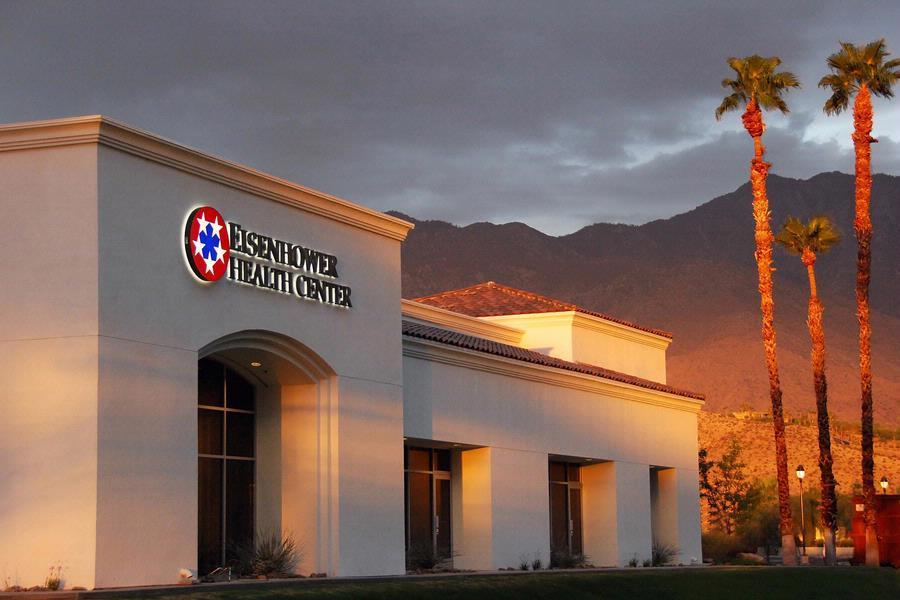
- Eisenhower Health Center at Rimrock
- 4791 E. Palm Canyon Drive
- Palm Springs , CA 92264
- 760-834-7930
- Affiliation Verification
- Chargemaster
- Community Health Needs Assessment & Benefits
- Employee & Provider Access
- Physician Payments Sunshine Act
- Notice of Privacy Practices
Key Phone Numbers
- Main Phone 760-340-3911
- Infection Control 760-773-1512
- Patient Relations 760-674-3648
- Eisenhower Phonebook
- Accessibility & Sitemap (xml)
- PO Terms & Conditions
- © 2024 Eisenhower Health · All rights reserved.
An official website of the United States government
The .gov means it’s official. Federal government websites often end in .gov or .mil. Before sharing sensitive information, make sure you’re on a federal government site.
The site is secure. The https:// ensures that you are connecting to the official website and that any information you provide is encrypted and transmitted securely.
- Publications
- Account settings
Preview improvements coming to the PMC website in October 2024. Learn More or Try it out now .
- Advanced Search
- Journal List
- Trop Dis Travel Med Vaccines

COVID-19: how can travel medicine benefit from tourism’s focus on people during a pandemic?
Irmgard l. bauer.
College of Healthcare Sciences, Academy - Tropical Health and Medicine, James Cook University, Townsville, QLD 4811 Australia
Associated Data
Not applicable.
In 2020, COVID-19 affected every aspect of life around the globe. The spread of SARS-CoV-2 through travel led to lockdowns, travel bans and border closures, crippling the tourism industry. Without tourists, there would be no tourism industry—and no travel medicine. Therefore, scholars started to research the human aspect of tourism immediately to develop strategies for economic recovery. The resulting insights are useful for travel medicine not only to see how tourism dealt with a medical crisis but also to understand travellers better who may be seeking health advice during and after a pandemic.
This article presents tourism research of 2020 covering risk perception and travel intentions including mass-gatherings, the use of technology to protect from infection, impacts on tourism workers, residents’ reactions to potentially infected travellers, discrimination, and racism. A potential fork in the road to tourism’s future may have implications for travel health practitioners. Research recommendations conclude the paper. Understanding the industry response during the early days of panic and uncertainty may help prepare not only appropriate guidelines for travellers but also clearer instructions for tourism, transportation, and hospitality in anticipation of the next pandemic.
Introduction
In November 2019, cases of a pneumonia of unknown cause appeared in Wuhan/China, reported to the World Health Organisation (WHO) on 31 December. Early January 2020, the virus SARS-CoV-2 was isolated. On 12 February, the WHO named the resulting disease COVID-19, declaring it a global pandemic on 11 March. From early 2020, publication floodgates opened from many medical specialties (PubMed on 6 July 2021 for ‘COVID-19’ yielded 150,445, six months later 213,484 results). Early health advice for the public, ‘personal non-pharmaceutical protection interventions (PNPIs)’, included cough and sneeze etiquette, self-isolation, avoiding contact/touch, social distancing, hand hygiene, mask wearing, all reasonable textbook instructions many of which were only feasible in affluent countries. From major outbreaks in China and Italy, the virus spread around the world. Travel, a key facilitator of the spread, was first restricted and then prohibited nationally and internationally in many countries via suspension of visa-on-arrival policies, travel restrictions/bans and closed borders. Not always was the relationship between health and politics harmonious or directives aligned.
Media coverage and social media posts during a crisis influence risk perceptions and travel intentions [ 1 , 2 ]. From the start, WHO alerted to a massive ‘infodemic’, an over-abundance of correct and false messages making it difficult for people to extract useful information, and attempted to debunk myths with accurate information on social media and collaborate with platforms to mitigate the damage [ 3 ]. This attempt was unsustainable and unrealistic considering the volume of data and skills necessary to spot the difference [ 4 ]. It was difficult to agree on what was reality and what were ‘alternative facts’ or strategic misinformation. COVID-19-misinformation has been deplored in medicine, where it provides the ideal ground for anti-science groups to the point of influencing government policy or being spruiked by political leaders [ 5 ]. Anti-vaxxer Facebook posts created doubt about COVID-19-vaccines long before vaccines existed, based on mistrust in the pharmaceutical industry, misinformation and conspiracy theories [ 6 ]. In tourism, misinformation became a serious issue for travellers, such as changes in risk perception or questioning public health measures, and residents, including the rise of racial discrimination [ 7 , 8 ].
The traveller, who is potentially spreading the virus or being exposed to it, is part of the tourism industry. How did tourism respond to the emerging medical crisis? For a for-profit industry (as for stand-alone travel clinics), a downturn in travel is devastating. All global regions experienced a decrease in international arrivals, e.g., Europe and Africa by 85%, Asia and Pacific by 96% [ 9 ]. In the US alone, the pandemic led to $645 billion in cumulative losses for the travel economy through March 2021 [ 10 ], costing the US economy 41.1 trillion in economic output [ 11 ]. Forecasts and potential recovery strategies responded quickly [ 12 – 14 ]. However, to plan for a post-pandemic future, the tourism and hospitality sector had to look not only at balance sheets but focus more than ever on the heart of the industry, the travelling public, employees and residents, to understand their response, concerns and perceptions regarding current and future travel decisions. Many questions arise, for example, how tourism cooperates with health authorities and receives, responds and implements health directives, how the accommodation and food industry executes instructions, how the industry trains staff to be COVID-19-safe, how it looks after expats and local employees, and how these measures are communicated to instil trust in all involved. Furthermore, and directly important for travel medicine, what are travellers’ perceptions of the pandemic? How has travellers’ interest and confidence in travel been affected by constantly and rapidly changing, often perplexing, directives that were different for the same situation in different countries?
Medicine published on COVID-19 right away – and so did tourism academia. While travel medicine uses the combined evidence of several medical specialties to care for the health and wellbeing of travellers, tourism is much better in understanding them. Therefore, it is useful to take advantage of this knowledge to inform travel medicine and travel health clinicians’ work now and in the post-pandemic future. This article presents and discusses tourism research conducted over the first year of COVID-19 as it relates to people involved in the industry: travellers, employees and residents at destinations, the very population that is travel medicine’s focus of care.
At the time of the literature search (July 2021), the Scimago Journal & Country Rank site listed 123 academic tourism and hospitality journals. Starting with the top-ranked journals (from IP 10.982) and descending the list, ‘COVID’ was entered into English-language journals’ search engine. The search covered all papers published in 2020 with a focus on people. Later advance publications were added if data were collected in 2020. Excluded were papers on industry economics, e.g., forecasts, business, and management. This article starts with a general assessment of the targeted literature before addressing individual themes.
Tourism literature’s focus on people in COVID-19 times
It is fascinating to witness the start of an entirely new thread of literature triggered by a novel topic of concern (see AIDS-literature in the 1980s). As soon as SARS-CoV-2 used travel to spread, the tourism industry responded to a threat that could devastate an entire industry. Rapidly designed research started as early as February 2020. Most papers present original research utilising social science or econometric methods and are highly complex, testing often more than ten hypotheses with the subsequent complex statistical analyses and presentation. Using mainly online surveys due to restrictions, the samples are large and comprehensive, resulting typically in an intricate network of causal relationships between variables. This much detail may be of no direct use to clinicians, but the overall trends give meaningful insights and inform travel health advice. Apart from references to the WHO, there are few cited medical sources; no paper was co-authored by health and tourism practitioners or scholars. Many studies originate in the Far East or in countries with high COVID-19 burden. Due to the delay between acceptance and publication, some statements are now outdated. Authors at the time could not foresee the duration of the pandemic, and one needs to think back to the early months of bewilderment and uncertainty when vaccination and the many attempts ‘to return to normality’ were unknown. As all authors had the same starting line, publications started independently without cross-referencing until later in the year. From 1 May 2020, the author guidelines of the high-profile Journal of Travel Research stipulated that submissions ‘must not ignore the effect of COVID-19’ [ 15 ]. An early warning to expect a COVID-19 research paper ‘tsunami’ prompted the call for a system-based research approach [ 16 ]. Lacking such a structure, papers presented here are organised into thematic clusters starting with risk perception and travel intentions including mass-gatherings, the use of technology to minimise infection, the impact of the pandemic on hospitality employees, residents’ reaction to travellers, hostility and discrimination, and a look into the future of tourism. Research recommendations for travel medicine, as they emerge from the tourism literature, conclude this discussion.
The traveller – To travel or not to travel
Without tourists, there is no tourism. The rapidly evolving existential threat to the industry within the context of global bewilderment triggered studies focusing strongly on (potential) travellers. Researchers’ differing academic backgrounds guided the choice of research questions, resulting in a wide range of topics. These can be categorised into aspects out of people’s control and those where travellers play an active role.
Being subject to outsider-control and disallowed the freedom of movement one is accustomed to, impacts mental wellbeing [ 17 ], in line with the exceptionally diverse psychology of pandemics [ 18 ]. Denied mobility, the ‘lockdown captivity phenomenon’[ 19 ] and ‘travel craving’[ 20 ] have been studied in Italy and Hungary in May/June, while an analysis of National Geographic promoted Instagram posts in April demonstrated a marked change in expression of personal experience and skills, social facets and in lifestyle [ 21 ]. In the pre-travel stage, in April, sentiment analysis on over 600 Italian online posts showed customer concern with airline cancellation and compensation, but also the much-unexpected result that a rise in COVID-19-deaths, not cases, increased empathy with struggling airlines [ 22 ]. In February, three US-studies demonstrated that the threat of infection decreased the willingness to accept price inequalities [ 23 ].
Other aspects can be controlled by travellers: the avoidance of crowding [ 24 ], or a willingness to pay for enhanced safety measures [ 25 – 28 ]. Most importantly, adherence to PNPIs lies very much with the individual. End of April, of over 400 Kosovar, 90% planned to travel to Albania that summer. At the time, 15% did not follow strict health ministry directives, 25% sometimes to never socially distanced, while 28% sometimes to never wore masks appropriately around others [ 29 ]. In the US, men were more likely to refuse masks for international travel [ 30 ]. In China, more women adhered to pro-social behaviour [ 31 ]. A far greater area of research covers people’s risk perception and subsequent intentions to travel during and after the pandemic.
Risk perception and travel intentions
The notion of the ‘crisis-resistant tourist’ who ‘travels despite’ or ‘not cancels because of’ crises, but does not risk-shift, i.e., take out travel insurance more than others [ 32 ] may help appreciate the following results. Because of the economic impact of reduced/cancelled travel, border closures and lockdowns, the industry is keen to understand potential travellers to be able to develop strategies to get people travelling again. First, it is especially important to appreciate people’s perception of risk during a pandemic.
Risk perception
Travel medicine is interested in risk perception (274 hits in Journal of Travel Medicine and 134 hits in Travel Medicine and Infectious Disease , 22 Dec 2021) because it influences decisions to visit a travel clinic, destination and behaviour choices, and subsequent adherence (or not) to health advice. For tourism, risk perception influences business decisions to secure profits. In contrast to real risk, perceived health risks are based on cognitive, affective, individual and contextual components and, therefore, subjective [ 33 ], influenced, for example, by the media [ 1 , 2 , 34 ]. In the first four months of the pandemic, media coverage influenced risk perception in Korea more than case numbers [ 35 ]. In two secondary data analyses from Hong Kong combined with four original US-surveys ( n = 744), the perceived threat of infection increased the tendency to avoid extreme travel options [ 36 ]. A South African survey (May/June) of 323 potential tourists from Africa, Europe and Asia assessed psychographic factors: dogmatic, sceptical and apprehensive, depending on risk perception and level of caution [ 37 ]. Important for travel medicine, dogmatic tourists may not follow risk mitigation measures. Over 1000 Indian travellers perceived risk differently depending on their fear of infection. Women, married and older travellers saw COVID-19 as more severe and adopted PNPIs more readily. While education made no difference in risk perception, higher education levels increased PNPIs usage. People on lower incomes and travellers for work and education were less willing to implement such measures [ 38 ]. Surveys in Germany, Austria and Switzerland ( n = 1370) before and immediately after the WHO-proclamation demonstrated relative low concern about COVID-19 before but strong increase in risk perception after, viewing as irresponsible business trips and travel to destinations with cases. Contact with tourists in one’s hometown were to be avoided [ 39 ]. Mothers avoided business trips to protect their family from potential infection [ 40 ].
Consumer distrust in hotel hygiene standards existed before, based on the assumption that service providers act negligently and incompetently [ 41 ]. Almost 99,000 Chinese hotel reviews of all 185 five-star hotels in Shanghai demonstrated a shift in consumer preferences beyond hygiene expectations. Breakfast, location and surroundings lost importance while in-hotel, in-room experience, service, cleanliness and front desk gained importance due to the ‘cocooning’, i.e. staying in hotel rooms for one’s own safety [ 42 ]. Staying in ‘love hotels’ in Ho Chi Minh City rather than tourist hotels appeared less risky, possibly because of less crowding and low tourist contact [ 43 ].
End of 2020, US restaurant and hotel customers ( n = 809) were reluctant to eat in sit-down restaurants, wanted visible evidence of sanitising efforts and accepted technology and robots [ 25 ]. A comprehensive exploration of tourists’ risk perception of COVID-19 proposed a conceptual model to interpret and explain travellers’ behaviour patterns. The section on risk included the obvious health and psychological risks as well as social risks (disapproval of one’s travel plans), performance risk (not receiving expected service), image risk (stigma of a location), and time risk (time-related costs, quarantine) [ 44 ].
For tourism and travel medicine, it may be important to consider shifting the public’s concentration on risk avoidance to risk management [ 45 ]. Normally, travel insurance provides some reassurance in case of misfortune. However, most insurer policies exclude pandemics and known events, and travellers were unable to purchase cover when they most needed it, leading to a ‘reverse moral hazard effect’, i.e., a reluctance for future travel. Yet, insurers need to exclude catastrophic events to remain solvent [ 46 ]. Willingness to pay (WTP) for perceived or actual better service/goods is a well-known tourism concept, which also emerged during the pandemic. WTP related to the expectation of particularly stringent health measures on transport, in restaurants and accommodation, for example, in Italy where, however, WTP was lower in regions with COVID-19 [ 28 ]. Because high adherence to hygiene measures was expected, no WTP was evidenced in Spain, especially when there was a strong intention to travel [ 47 ]. To manage risk, apart from WTP for superior crisis management, some type of travel allows crowd avoidance, for example, camping [ 27 ] or a ‘safe’ destination, e.g., geological sites in Oman [ 48 ]. To enable the public assessing a location’s safety from epidemics as part of travel preparations, a ‘country-level index of epidemiological susceptibility risk’ was proposed built on health infrastructure, demographics, environmental safety infrastructure, economic activity, communications infrastructure and governance institutions [ 49 ]. The onus would be on tourists to assess if the chosen destination can deal with potential risks adequately – a formidable task. It is unclear who was to compile this index, especially in poor countries. Regardless how this risk is perceived, what counts for travel medicine and tourism is the public’s actual plan to travel.
Travel intentions
Intentions differ from desire as they are perceived as more realistically ‘do-able’ within a firm timeframe [ 50 ]. At the time of data collections, as everybody else, neither researchers nor study participants knew how long this pandemic would last or if there was a clear end. Nobody knew of the varying individual and global policies and travel bans or about potential vaccines. Therefore, people’s travel intentions could not always be classified clearly as during, post-pandemic or loosely ‘sometime later’, nuances usually lost in quantitative data. Interviews with potential travellers and tourism professionals in Western Australia formed the basis for a motivator-demotivator approach to travel during COVID-19. Motivators were needs for mental wellbeing and social connectedness including personal growth and relaxation. Demotivators consisted of health and safety risks including the level of perceived competence of authorities to handle the crisis [ 51 ].
In Greece, travel was unlikely not because of COVID-19 but lack of funds [ 52 ]. In Italy – as in Egypt [ 53 ] – trust in responsible provision of safety protocols influenced travel plans [ 28 ]. In May, among 1144 18–90-year-old Italians, age influenced vacation preferences [ 54 ]. In the same month, students and workers in Macau reduced their travel intentions but felt safe due to strict policies; however, tourists were urged to stay away [ 55 ]. In contrast, in India, intended travel did not necessarily mean adoption of PNPIs [ 38 ]. Unexpectedly, in June, Spanish data suggested that living in an area with worse case numbers and having personal experience with the disease, increased plans to travel this very summer, especially in men and those very concerned about the pandemic. Adhering to health rules, such travel may be mentally beneficial [ 56 ]. Some intended travel leads to the accumulation of large numbers of people, for example, travelling on cruise liners or gathering for religious or cultural festivals.
Mass-gatherings
The close distance between people and their mingling at large gatherings provides the perfect scenario for ‘super-spreader’ events.
One such example are ocean liners where large numbers of passengers are inescapably confined by the perimeter of the vessel. The unfortunate outcome revealed itself in the dramatic events on cruise ships early in the pandemic. On 1 February, a passenger leaving the Diamond Princess earlier in Hong Kong tested positive. The ship arrived in Japanese waters on 3 February, and 3711 passengers and crew were quarantined [ 57 ]. On 19 March, 2650 passengers disembarked the Ruby Princess in Sydney before COVID-19 test results were known, to avoid missing connecting domestic and international flights. This mishandling became the single largest source of Australia-wide infections [ 58 ] resulting in over 900 cases around the country and 28 deaths [ 59 ]. Especially frightening for the public were the rapid deaths, the first on 24 March. On 15 March, four days after the WHO declared a pandemic, and while companies cancelled cruises and ships at sea were denied access to ports, the Australian luxury expedition ship Greg Mortimer left Argentina for Antarctica with 217 people on company advice that no virus was on board. Day 8 recorded the first fever. The original itinerary abandoned, and Argentinian ports closed, Uruguay allowed docking offshore. Eight passengers and crew were evacuated, including one ship physician. Of all 217 on board, 128 (59%) tested positive [ 60 ]. One Filipino crewmember died [ 61 ]. What polished written reports cannot convey is captured brilliantly in the 2-part documentary Deadly Trip of a Lifetime [ 62 , 63 ]. Staff are often forgotten when the focus is on travellers. After passengers disembarked, the crew of many ships were stuck at sea, often confined to their small windowless bunks instead of being moved to the then vacated passenger cabins, away from their families, with often limited communication and, in some cases, exposed to irresponsible company pressures [ 64 – 66 ]. Staff’s mental distress led to a number of alleged suicides on-board [ 64 ].
By the end of March, many ships were still wandering the high seas unable to find a port to dock. The cruise industry came to an abrupt halt with massive economic losses. Trust in a company’s crisis management was essential for lower-income US-travellers who were willing to cruise again with a steep discount [ 67 ]. In contrast to new customers, influenced by other consumers’ negative experiences, repeat customers were guided by their own previous experiences [ 67 ]. This interesting concept could be explored in travel medicine research on risk perception of new vs repeat travellers in general.
Trust in government/public health agencies and cruise companies played an important role in risk-reducing behaviour and future cruise intentions of 504 Australians. To regain trust, the perception of competence, consistency, consideration (in the best interest of public) and conviviality (good will toward the information provider based on trust) will need to be restored [ 68 ]. Almost 55,000 tweets (1 Feb – 18 June) reflected the global public sentiment toward cruising, mirroring the evolving events during the early pandemic. A growing interest in river cruising showed attempts to gain distance from the masses [ 69 ]. Legal questions regarding humanitarian obligations to assist cruise passengers in need vs a country’s obligation to safeguard its population [ 70 ] also involve health and medicine.
Religious tourism
Religious travel spans from crusades, historic pilgrimages, and missionary travel to today’s faith-based conventions or retreats. Modern day international examples are Hajj and Umrah, the Shia pilgrimage to Iran and Iraq, Kumbh Mela in India, Easter at the Vatican, or Christmas in Bethlehem, and smaller local festivities. A pandemic requires sudden decision-making of health authorities at the faith-based destination, e.g., the Ministry of Hajj and Umrah [ 71 ] and in countries of pilgrims’ origins [ 72 ]. Cancelled in 2020, in 2021 only 60,000 vaccinated pilgrims were admitted to the Hajj. Not only is overcrowding of concern, but the touching/kissing of objects such as walls of shrines [ 73 ] or statues of saints. There is a clear concern for the economic effect on religious destinations [ 73 , 74 ], and the impact of COVID-19-measures on the faithfuls’ ability to follow religious obligations.
Appreciating the role faith plays in a crisis, WHO published in April 2020 practical recommendations for religious leaders and faith-based communities, asking to share clear, evidence-based steps to reduce fear, provide reassurance and promote health-saving practices [ 75 ]. The detailed guidelines focus on gatherings, safe burial practices and leaders’ role in COVID-19 education. The recruitment of religious leaders was crucial with the introduction of vaccines. While Pope Francis saw vaccinations as a moral obligation [ 76 ], others warned of vaccines causing homosexual tendencies, inserting microchips, or being produced from cow’s blood (to harm Hindus) or slaughtered foetuses [ 77 ]. In the Serbian Orthodox Church, Holy Communion during Easter is of highest importance as medicine for soul and body. The church’s appeal to observe health directives was met with strong resistance and many requests to lift the travel ban during Easter. The ban represented not only ‘physical’ social distancing, but social (and religious) distancing in its true sense [ 78 ].
An Indonesian study compared pre-Eid travel intentions in February 2020 and actual travel (despite a travel ban) after festivities in May. Lack of travellers’ personal agency, e.g., perceived obligation to religion and family, promoted risky behaviour and ‘wished away’ potential health risks [ 79 ]. In India, before the Delta variant, people were willing to continue travel post-COVID-19 to religious sites provided reliable health and safety measures were in place during travel and stay [ 80 ]. An often-overlooked travel situation is being stuck overseas due to unforeseen events. A study with Pakistani pilgrims to Iran, unable to return home, explores the topic of travel burnout [ 81 ]. Where normally spirituality is a source of well-being, pilgrims were confronted with unexpected out-of-their-control situations of border closures, delays, need for food and shelter on top of the fear of becoming infected. Pilgrims showed low self-efficacy (existential fear, xenophobic response on return, restricted mobility), travel exhaustion (stress, new protocols, friction among the group, homesickness) and emotional maladaptation. Coping strategies included faith, better future travel planning, and reliance on friends and family. Coping with being trapped unexpectedly during travel is much under-researched and fits easily the travel medicine research portfolio.
Technology meets health directives
The understanding that close human contact, an important part of travel, increases the spread of infection, prompted tourism to find ways to provide safe travel experiences, using robots and virtual travel. Artificial intelligence devices have been employed in tourism previously and consumers’ attitudes towards them studied eagerly [ 82 ]. Now they are an important attempt to minimise person-to-person contact with the bonus of frequent sanitising.
During COVID-19, anthropomorphic robots, robotic vehicles and other autonomous devices were used in hospitals, communities, airports, recreation areas, and hotels and restaurants [ 83 ]. There are challenges, as in the unfortunate Henn na Hotel in Nagasaki [ 84 ], but also job losses, privacy and data security, misuse by governments [ 83 ], and a robotic barman unable to listen to personal problems. However, in pandemic times, the acceptance of robots may be greater [ 85 ]. Just before COVID-19, over 500 TripAdvisor reviews (2013–2019) of three robotic hotels in the US and Japan were positive, though the sample may be biased towards technology-fans who enjoy robots as added preference. In a pandemic, robots could assist those who want to travel [ 86 ]. As physical distancing reduces the risk of infection, 1062 US and Chinese customers’ risk perception when interacting with hospitality staff influenced their acceptance of service robots [ 87 ]. Tourists from 18 countries preferred anthropomorphic robots to all other types, but robots should not replace the innate anthropocentric nature of travel. The increased use of robots during and after COVID-19 may change acceptance as a means to avoid infection [ 88 ].
Travel bans, lockdowns and social distancing favoured the increase of webcam-travel and virtual tours – free or purchased. Though of differing quality, technology brings attractions to the ‘traveller’s’ home. University students and staff ( n = 401) in Oman and Germany found virtual travel beneficial for the disabled and those less affluent, and during lockdown or crises. Not replacing real travel, it could entice people to visit the actual site after the pandemic [ 89 ]. Locals, of course, gain little from virtual tourism. US citizens suggested that perceived high COVID-19 threat severity, response efficacy and self-efficacy raised social distancing behaviour which increased the likelihood of using virtual tours, while those with perceived low threat severity continued to travel in person [ 90 ]. Feelings of freedom, nostalgia and connection triggered by webcam-travel were associated with happy memories made before lockdown, and so uplifted people’s mood [ 91 ].

The impact of COVID-19 on hospitality employees
While a pandemic can cripple an industry economically, an industry only exists on the shoulders of employees who are not only personally at risk of infection but experience a dramatic change in demands on them. Tourism workers suddenly had to clean, serve, communicate, distance, and implement bespoke instructions without a health background, much like the general public who was supposed to follow rules without understanding the link between the required activities and viral behaviour. The first studies into the impact of COVID-19 on tourism workers focussed on hotel and hospitality employees. The comments of 36,793 employees on the US-site Reddit, posted 3 January to 19 April, displayed real-time perceptions. Up to April, anxiety led all other negative emotions, when anger joined other factors, such as employment and racism [ 92 ]. In Turkey, 151 staff from two 5-star hotels responded in June to the risk of infection with increased mental health problems, absenteeism and low life satisfaction, the latter somewhat balanced by being married with children. Companies should, therefore, demonstrate a level of care by offering stress management programs (resilience, alcohol, finances), affordable groceries and medical care [ 93 ]. Unemployment, pandemic-induced panic and lack of social support caused distress in US tourism employees ( n = 1231), especially in women and young employees [ 94 ]. US immigrant hospitality workers, disproportionally represented in hotel and food services, on low wages and poor working conditions, were even more affected considering their ineligibility for COVID-19-aid despite paying taxes [ 95 ]. A company’s response to COVID-19 influences employees’ perceptions on risk. In Vietnam, a surprising result was obtained from almost 400 employees in that satisfaction with the organisation not only helped raise job performance but strengthened the positive effect of a perceived health risk on job performance; full trust in organisations allowed concentration on the job [ 96 ]. This might indicate the importance of an employer when lacking national relief polices; it could also mean that desirable responses were collected.
Socially responsible workforce management influences employee anxiety. Over 400 Chinese tourism workers (almost half from Wuhan) indicated in February the importance of trust in the organisation to overcome fears, especially of unemployment, and poor mental health [ 97 ]. Similar results arose from 1594 employees from 23 Chinese hotels. Close person-to-person contact makes hotel-employment a high-risk occupation. Using the constructs: safety coaching, control, motivation, care, compliance, participation, adaptation, perceived susceptibility, perceived severity and belief restoration, employee perception of a hotel’s socially responsible initiatives promoted compliance with specific directives and citizenship behaviour. Hotels should assist employees in managing perceived risk by providing objective up-to-date information, assisting in dealing with negative emotions, providing stability, developing emergency response plans and support belief restoration [ 98 , 99 ]. While COVID-19 highlighted the immediate effect on tourism workers, the question arose if this is, indeed, a different situation ‘from the precarious lives they normally lead or just a (loud) amplification of the “normal”’ [100,p. 2813]. The authors propose that hospitality work in a pandemic is a magnification of misery, not something new, and highlight the problem at three levels. At the top level (macro), governmental, international agency and global policies ensure a framework of low wages, poor working conditions, and insufficient social security, e.g., ‘flags of convenience’ with uncontrolled exploitation of cruise ship workers. At the meso level, organisations control through outsourcing, ‘business hibernation’ and furloughing. In a pandemic, this leaves the employee at the micro level even more vulnerable to crises, especially young, women, immigrants, and international student workers [ 100 ].
Residents’ reaction to travellers during COVID-19
An important part of the tourism experience is the interaction with local people who, in general, and even if only for economic reasons, welcome visitors. Does this welcome change with visitors potentially bringing disease? In February, comparing the perception of social cost (shortage of necessities, travel restrictions, pressure on hospital beds) of a combined 3364 residents in Hong Kong, Wuhan and Guangzhou by using two hypothetical scenarios, confidence in authorities was easily lost when policies were compiled hastily. Positive framing of messages and ‘mental accounting’ of pros and cons, based on evidence, are important to ensure trust in directives [ 101 ]. In the same cities, in February/March, 1627 residents were most concerned about the risk of cross-infection due to tourism activities and, especially younger people, showed a WTP for risk reduction and appropriate action [ 26 ]. From March, and for a year, a qualitative study monitored the impact of COVID-19 on tourism in Bali. Already a mass tourism destination producing 55% of GDP, Bali’s original plan was to increase international arrivals to 20 million in 2020. While the Balinese people followed health directives, initially without any official advice for the tourism industry and with rising case numbers and deaths, those dependent on tourism had grave fears for their economic survival. On the other hand, those without links to the industry saw the break in arrivals as a welcome pause in ‘over-tourism’ and pointed to the need for more respectful, sustainable approaches. For them, COVID-19 was a wakeup call from God to the Balinese regarding the unsavoury sides of tourism. The official line, however, appears to support a return to mass tourism to make up for the losses [ 102 ]. In May/June, 634 residents on the Korean Jeju Island, which experienced an increase in domestic tourism, indicated that the perceived risk of being infected by visitors influenced their level of welcoming emotions. Residents cannot identify infected tourists. In contrast to tourists who can avoid hotspots, residents cannot leave [ 103 ]. The dilemma between supporting the economy and risking infection emerged from a Japanese survey. The ‘Go to Travel’ campaign, providing discounts and vouchers to increase domestic travel, was unwelcome by many. Even if residents followed all health directives, they could not escape tourists [ 104 ].
The vulnerability of indigenous destination communities has been of concern. They suffer equally a loss of business, but being often in remote or isolated settings and further away from suitable health care, infections would be disastrous. In Australia, most indigenous communities were off-limits to individual and organised tourists. Canada [ 105 ], New Zealand [ 106 ] and Brazil [ 107 ] voiced similar concerns with a shift to more emphasis on social and environmental wellbeing and respect rather than the insistence on the ‘right to travel’[ 105 ].
COVID-19 and travel: hostility, discrimination, racism
Fear of infection also shows in discriminatory reactions of residents to visitors. Press reports emerged very early on from India of international tourists being directed to leave accommodation and country, refused food or met with severe hostility [ 108 , 109 ]. Even more pronounced were aggressive reactions around the world towards not only travellers of Asian appearance but also residents in non-Asian countries [ 110 – 112 ]. Chinese international students in the US found that their mask wearing indicated illness and put them at even greater risk of racial abuse [ 113 ]. In February/March, 26 tourists to India reported a sense of mistrust towards tourists, subsequent negative emotions towards India and a lack of willingness to interact with locals due to the perceived rejection, but also an observed lack of implementation of health directives [ 114 ]. A similar link between unwelcoming resident behaviour and destination perception emerged in Hong Kong [ 115 ]. In February, 203 US citizens indicated that residents who experienced everyday discrimination themselves based on some social attributes, were more likely to support hostile responses against tourists, especially Mainland Chinese [ 116 ]. A study on host–guest relations in Singapore mid-2019 offered a chance to compare such views with those in April 2020 (combined n = 468). Before COVID-19, Mainland Chinese were tolerated for their spending power despite being stereotyped unfavourably. Perceived risk of infection and expected restrained spending may lead to increased intolerance towards these visitors [ 117 ]. Much blame for this discrimination lies with the media [ 7 , 8 ].
Tourism has studied xenophobia before. The xenophobic tourist anticipates and/or experiences unpleasant emotions related to the encounter with locals at foreign destinations. For example, the more xenophobic a traveller, the higher the uptake of travel vaccination, insurance, group travel and booking through an agency, and the lower the interest in local food. Men were more xenophobic; education or age made no significant difference [ 118 ]. This deep-seated unease extends to purchasing behaviour in general, e.g., buying local products, but also choosing familiar airlines and hotels when travelling to a destination similar to home [ 119 ]. COVID-19 added the unpleasant perception of crowding [ 120 ].
Tourists’ fear of the ‘other’ (host) originates from the same ancestral disease-avoidance mechanism as the fear of residents of the ‘other’ (visitor). In ancestral social groups (in-group), people learned about the potential ill effect from contact with people from other social groups (out-group) and developed adaptive behaviours. Based on cues of ‘strangeness’, i.e., an otherness to one’s own ‘normality’, out-group people were avoided not only for cues, such as their physiognomy, food and hygiene practices, but the perception of vulnerability to potential disease. Negative attitudes including disgust then led to the culturally evolved behaviour of keeping a distance [ 121 ]. Furthermore, staying within one’s own group poses less of a risk of disease transmission as well as ensures the likelihood of being cared for and supported in need [ 122 ]. This ‘behavioural immune system’, the avoidance of contact and sticking to the in-group, is easier to implement [ 123 ]. After all, pathogens are invisible; therefore, other cues need to be employed. This leads to in-group conformity and out-group exclusion [ 124 ]. However, this exclusion also applies to in-group members who had the misfortune of being caught out at an out-group location, such as Balinese cruise ship workers returning home [ 102 ] or Pakistani pilgrims returning from Iran [ 81 ]. Having limited or no control over COVID-19-events, people’s own locus of control may also attribute blame, for example, on destinations [ 125 ] or on marginalised people, such as refugees and asylum seekers [ 126 ], and perhaps, in the future, the unvaccinated. Evolutionary motives are the ultimate explanation of discrimination during COVID-19, but this does not condone the widespread hostility experienced by travellers and residents alike. Media misinformation and conspiracy promoters have much to answer for, although health and medicine have not excelled in improving general health literacy on which to base appropriate health information in the event of a pandemic.
Future directions in tourism
For decades, scholars have warned of negative outcomes through relentless growth in tourism. As late as 2019, these warnings demanded a ‘de-growing’ and reprioritising, while proposing wide-ranging strategies for change [ 127 ], strategies widely ignored by corporate giants. Ironically, just one year later, COVID-19 showed precisely not only the trouble tourism had created for itself, but also how it contributed to the spread of the virus. To salvage some profits, like everybody else, business owners and executive boards had to make decisions based on knowledge of the virus, constantly changing government and public health directives and their different interpretations in different countries, personal opinions of health professionals, poorly constructed messages to the public, often questionable media involvement and crass conspiracy theories. The questions arise how the pandemic has shaped our desire to travel, and what tourism will look like after the crisis. Two aspects may support a change in direction, long asked for by tourism scholars and residents at destinations.
First, lengthy lockdowns and restrictions have modified many people’s worldviews, lifestyles and previous behaviours. Mindfulness, ‘slowing-down’, a measured approach to consumption and a focus on ‘what is really important’ gained prominence, at least for those who can afford such luxury. This view may now extend to many more travellers beyond those who travelled mindfully before. Second, media reports of wildlife moving into seemingly abandoned suburbs, cleaner water in rivers and oceans, better air quality, less waste (apart from an unprecedented increase in medical waste [ 55 ]), and peace and quiet showed an almost forgotten picture of a different world. Considering tourism’s involvement in and suffering from COVID-19, how the industry will progress from here is important for travel medicine as it may influence travellers’ different care requirements depending on changes in destinations or holiday activities. There are two opposing schools of thought: either return to growth and mass tourism or take advantage of the opportunity to reset.
The first view is that tourism must recuperate the enormous losses and get ‘back to normal’ as soon as possible, trusting that people have short memories (shortly after the Ruby Princess debacle, long waiting lists for the next possible cruise filled quickly). Opening borders, spare funds, boredom, and fear of missing out may lead to ‘revenge travel’ or ‘catch-up travel’ [ 128 ] without considering impacts or consequences. The economic benefits of tourism, driven by the World Tourism Organisation and supported by government interventions, may again be the driving force behind the ‘business-as-usual’ return to pre-COVID-19 business behaviour, a possibility that sparked a fiery debate between the two tourism camps [ 129 ]. This dilemma is evident in Bali, where residents who depend on tourism desperately want it back while others relish having the island to themselves. Government intentions seem to favour a return to growth-tourism [ 102 ]. Similar concerns apply to Nepal, which had declared 2020 the ‘Visit Nepal Year’, with a potential return to excessive over-tourism that prevailed before the pandemic [ 130 ].
The second view, recognising that mass-tourism is not resilient and inert in responding to sudden changes, suggests treating the pandemic as a chance to transform global tourism away from unsustainable and destructive growth towards mindful and equitable forms that prioritise quality over quantity [ 131 , 132 ]. Suggestions are a preference for slow nature-focused tourism [ 133 ] and its mental health benefits [ 134 ], avoidance of mass-cruises [ 135 ] and a greater consideration for host communities [ 136 ]. In April 2020, Tourism Geographies devoted a highly recommended special issue to the discussion of how COVID-19-events can contribute to a ‘substantial, meaningful and positive transformation of the planet in general and tourism specifically’ [ 137 ,p. 455] where growth is in well-being, not profit. This goes far beyond the call for responsible tourism, i.e., the call for having less damaging impacts, and requires a radical transformation away from systematic inequalities [ 138 ] towards a balanced, resilient and just post-pandemic tourism [ 139 , 140 ]. Pleasingly, small operators may turn out more resilient due to their potential flexibility within a specific local community than unwieldy multinationals [ 141 ].
Compared to previous pandemics and large-scale disease outbreaks over the last 100 years, COVID-19 will be the costliest, at least in economic terms. While some locations may opt for a mindful change, it is highly likely that the focus remains on growth, which may prove even more unsustainable than before [ 142 ].
Recommendations for research
Looking at other disciplines’ research topics and methods can unearth useful ideas adaptable by travel medicine for better travel health care and understanding of travellers’ motives, attitudes and behaviour [ 143 ]. The criticised lack of a structural research agenda at the beginning of the pandemic [ 144 ] and the subsequent flurry of diverse topics and approaches nevertheless provides travel health practitioners with a vast range of frameworks, topics and methods useful in novel travel medicine research. Theories, such as the Protection Motivation Theory, Theory of Planned Behaviour, Risk Aversion Theory, Attribution Theory (Locus of Control), Cognitive Appraisal Theory, Theory of Reasoned Action, Motivations Reasoning Perspective, and many more are useful to study travel health behaviour, risk perception, coping strategies and so on, thereby elevating the usual KAP (Knowledge, Attitudes and Practices) studies to a more robust level. Equally, several tested tools could be explored and modified to suit travel medicine concerns, such as the Tourist Worry Scale [ 145 ], Tourism Fatigue Scale [ 146 ], Travel Safety Attitude Scale [ 147 ], Pandemic Anxiety Attitude Scale [ 148 ], Tourist Xenophobia Scale [ 118 ], or Sentiment Analysis [ 69 ] for text-mining of social media data.
This article has covered a wide range of topics, all of which could be examined from a travel medicine perspective and in multidisciplinary teams, the latter a particularly valuable way to develop fresh research questions [ 149 ]. The impact of infectious disease on travellers’ psychological state [ 23 ], distrust in service providers [ 41 ] including travel health providers, perceptions of inconsistent/conflicting medical advice, vaccine acceptance influenced by religious leaders or ‘anti-vaxxers’, or the acceptance of travel health advice during a pandemic are only some examples. Assaf et al. suggested 17 topics for future research for consumer/traveller behaviour alone [ 150 ]. Many harbour health aspects. The effects of sensational media coverage regarding travel medicine concerns are little understood. Discrimination and racism may influence certain health behaviours abroad, e.g., choosing familiar food from questionable hotel kitchens over freshly prepared ‘foreign’ local food. For more detailed insight, the times of data collection for the presented studies could be linked to the respective country’s case numbers, health directives, government policies, travel restrictions and lockdowns at that time, for example, matching the medical response in Vietnam [ 151 ] to a study on employees in Vietnamese hotels [ 96 ]. Travel medicine research usually focuses on travellers’ wellbeing. So far, travel health professionals themselves, especially during a pandemic, have been of limited interest to researchers.
Limitations
This article only utilised English-language academic tourism journals, potentially missing important findings. Journals of other specialties, such as aviation, transport, food and catering, were not consulted. No doubt, there were many manuscripts still in the peer-review or revision phase. With evolving knowledge of the virus’ behaviour and subsequent policy responses, there may be a shift to an entirely different focus of concern in later studies.
Even before the pandemic was announced, tourism scholars recognised the existential threat to the industry, reacted quickly and commenced research depending on their respective area of expertise. Although these early studies were, naturally, uncoordinated, many focused on the lifeblood of tourism: travellers, workers and residents, the very core of travel medicine. Parallel interests emerged. Risk perception and travel intentions are examined here from the industry’s perspective. Health directives advise strongly against mass-gatherings, yet people insist on getting on cruise ships as soon as possible or wish to follow religious or cultural obligations. On the other hand, technology in the shape of virtual travel or robotic devices keeps people at safe distance and so minimises person-to-person contact. The impact of COVID-19 on tourism workers and residents at destinations including the arising hostility and discrimination, are firmly based in a health context. If and how tourism learns from the current business model’s vulnerability will affect travel health practitioners’ work.
While the results are tourism results, they allow a better insight into people than travel medicine research typically can, with implications for travel health practitioners. If travellers are reluctant to travel for a long while, travel health clinics lose revenue and practitioners may lose recency of practice. People who will travel regardless may present to clinicians different sets of issues, require a modified approach to travel health advice, ask different questions, e.g., ‘do robots really protect me?’, or state their distrust in (health) authorities and so challenge practitioners to provide evidence so that travellers can make sensible informed decisions.
Travel medicine and the tourism industry are tightly connected via the traveller, yet there is still little cooperation, collaboration and acknowledgment of the other. This connection should be exploited more for the benefit of travel health and medicine and, ultimately, for the traveller. The first 6–12 months of the pandemic seem now a long time ago due to vaccination, anti-viral treatment and adoption of a ‘new normal’, with the realisation that COVID-19 will not disappear in a hurry. It is prudent to remember those first months and the ‘hits and misses’ in medicine and tourism. Presumably, the next pandemic is aided by travel again – and may be just around the corner.
Acknowledgements
Authors ’ contributions.
The author read and approved the final manuscript.
Availability of data and material
Declarations.
Publisher’s Note
Springer Nature remains neutral with regard to jurisdictional claims in published maps and institutional affiliations.

Find your care
Travel medicine for traveling worldwide.
Prevea Health can help you maintain good health and reduce your personal risk while traveling abroad. Our experts help you prepare for international travel by offering:
- Pre-travel counseling
- Pre-travel immunizations
- Prescription medications to treat travel-related issues
- Travel education
The Prevea Travel Medicine clinic sees patients who are planning on traveling to various locations across the globe, including, but not limited to, Africa, South and Central America, the Caribbean, and Southeast Asia. Our physicians and providers offer travel education along with immunization and medication recommendations specific to your destination. We’ll answer questions about food and water-borne illnesses, malaria and other diseases transmitted by insects, altitude sickness and other traveler diseases, and environmental and safety concerns that pose a risk when you travel internationally.
Let Prevea Health’s Travel Medicine experts in Green Bay, Manitowoc and Eau Claire take care of the medical details so you can concentrate on planning your trip. Whether it’s business travel or your next adventure, you can feel comfortable traveling abroad after a visit with Prevea Travel Medicine.
Why invest in travel counseling?
Prevea’s Travel Medicine program is dedicated to making sure you have the recommended travel immunizations and medications, as well as helpful advice, so you can stay healthy and safe abroad. You’ll receive the most accurate, up-to-date recommendations for your safety and well-being. Our physicians and providers will suggest specific immunizations based on your itinerary and personal health history, and then you can decide which ones you’d like to receive.
Travel immunizations we offer include, but aren’t limited to:
- Yellow Fever (Eastern Wisconsin only)
- Typhoid vaccine
- Hepatitis A and B vaccine
- Japanese encephalitis vaccine
- Meningitis vaccine
- Rabies vaccine
How to prepare for your appointment
The travel medicine appointment will be more productive when you take time to prepare in advance. It’s important to make the initial appointment at least two to four weeks before your departure because it can take the body up to four weeks to develop antibodies after most travel vaccines. In general, the further out from travel you receive your vaccines, the better.
When it is time for your appointment, please plan to bring:
- A complete itinerary identifying each stop on your schedule, length of airport layovers, length of stay, activities and accommodations for each area of planned activity.
- Your immunization record including childhood and military vaccines. If you’ve been vaccinated for yellow fever, bring your original International Certificate of Vaccination or Prophylaxis (ICVP) documentation.
- A list of your current prescriptions and over-the-counter medications.
- Your health history including the current status of chronic health conditions and pregnancy.
- Special needs or concerns.
Eastern Wisconsin
Western wisconsin.
Medical Emergencies: Dial 911
For Non-Urgent Medical Needs: Contact Us
Connect With Us
- COVID-19 center
- Virtual Care
Stay Informed With The Latest News From Prevea Health
- Language Assistance
- Policies & Notices
- Terms of Use & Privacy Policy
- Search Menu
- Advance Articles
- Editors Choice
- Author Guidelines
- Submission Site
- Open Access Options
- Self-Archiving Policy
- Author Resources
- Read & Publish
- Reasons to Publish With Us
- About Postgraduate Medical Journal
- About the Fellowship of Postgraduate Medicine
- Editorial Board
- Advertising & Corporate Services
- Journals on Oxford Academic
- Books on Oxford Academic
Article Contents
The multi-specialty recruitment assessment (msra): implications for specialty training competition.
- Article contents
- Figures & tables
- Supplementary Data
James L Turnbull, The multi-specialty recruitment assessment (MSRA): implications for specialty training competition, Postgraduate Medical Journal , 2024;, qgae058, https://doi.org/10.1093/postmj/qgae058
- Permissions Icon Permissions
I read with interest the article by Ferreira [ 1] regarding increasing competition for postgraduate training posts. One aspect not mentioned in the article is the growing use of the Multi-Specialty Recruitment Assessment (MSRA) for shortlisting, which has allowed applicants to easily apply to many different specialities each year. Originally used for General Practice ST1 applications, it is now part of the application process for nine of the CT1/ST1 grade specialties, as shown in Fig. 1 [ 2]. An applicant’s MSRA score can be used for each specialty application within a given cycle, reducing the time and effort to make multiple applications compared to previous approaches that included self-scoring assessments or white space questions.
An increasing number of applications per unique candidate would support the concept of greater ease of application. A recent freedom of information request made to NHS England has indicated exactly that [ 3]. As shown in Fig. 2, not only has there been an increasing number of unique applicants per year, but also an increasing number of average applications submitted per each unique applicant per year. This leads to a multiplier effect on total application numbers, which may explain the drastic graphs in Fig. 1 of Ferreira’s original article [ 1].
Email alerts
Citing articles via.
- Recommend to Your Librarian
- Advertising and Corporate Services
- Journals Career Network
Affiliations
- Online ISSN 1469-0756
- Print ISSN 0032-5473
- Copyright © 2024 Fellowship of Postgraduate Medicine
- About Oxford Academic
- Publish journals with us
- University press partners
- What we publish
- New features
- Open access
- Institutional account management
- Rights and permissions
- Get help with access
- Accessibility
- Advertising
- Media enquiries
- Oxford University Press
- Oxford Languages
- University of Oxford
Oxford University Press is a department of the University of Oxford. It furthers the University's objective of excellence in research, scholarship, and education by publishing worldwide
- Copyright © 2024 Oxford University Press
- Cookie settings
- Cookie policy
- Privacy policy
- Legal notice
This Feature Is Available To Subscribers Only
Sign In or Create an Account
This PDF is available to Subscribers Only
For full access to this pdf, sign in to an existing account, or purchase an annual subscription.
- Back to Pharmacy
Specialty Pharmacy
Specialty medications with the local support you need.
Welcome to the specialty pharmacy at Samaritan Health Services. Our team of pharmacists and dedicated professionals will help you get the specialty medication you need at an affordable price.
We are happy to deliver your medication to your door, and we will partner with your health care team to manage your refills and monitor your lab work to make sure the medications are keeping you on the right path.
Got a health question? Find the answer by going to Medline Plus , an online health information resource.
Learn about your rights and privacy protections as a Samaritan patient.
Pharmacy Mailing Address
2300 NW Walnut Blvd., Lower Level Corvallis, OR 97330
Weekdays, 7:30 a.m. to 5:30 p.m.
Phone number
541-768-1299
Toll Free: 800-569-4616
Contact us by email
Samaritan Specialty Pharmacy is accredited by both URAC and ACHC for compliance with a comprehensive set of national standards pertaining to Specialty Pharmacy services.

- PAYMENT FOR SERVICES
- INFORMATION ABOUT THE EDUCATIONAL ORGANIZATION

- Research & Innovations
- International Cooperation
- Website of the Clinics of Samara State Medical University
- About the Clinics of Samara State Medical University
443079, Samara, Karl Marx Ave., 165B
Multichannel call center
+7 (846) 274-81-00

Clinics of Samara State Medical University
Career at Samara State Medical University
About the university
Information about the educational organization
Priority 2030
Local Documents
Samara State Medical University Development Fund
Digest SamSMU Family
Newspaper "Medic"
Governing bodies
University managment
Academic Council
Administration
Program to attract Russian and foreign scientists
Hall of Fame
Subdivisions
Scientific and educational centers
Countering COVID-19
National project "Science and universities"
National project "Health"
University of Healthy Lifestyle
Countering corruption and terrorism
Sustainable Development Goals 2030
Institutions
Institute of Clinical Medicine
Institute of Pediatrics
Institute of Dentistry
Institute of Preventive Medicine
Institute of Pharmacy
Institute for Social, Humanitarian and Digital Development of Medicine
Institute of Nursing Education
Institute of Vocational Education
Video lectures
- International activities
- Innovation and Science
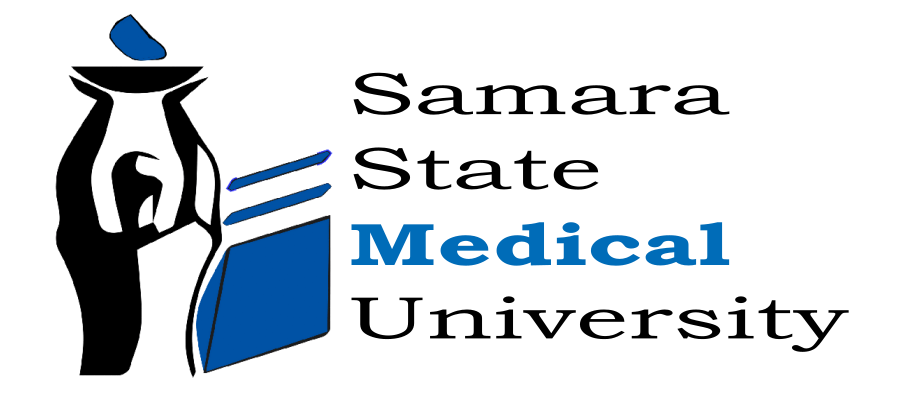
- Institutes >
Institute of Preventive
The Institute of Preventive Medicine is a major center for the implementation of educational, scientific and therapeutic activities in the field of preventive medicine.
The Institute was established by order of the rector of the Samara State Medical University, Professor of the Russian Academy of Sciences A. V. Kolsanov No. 3 dated January 31, 2020, to provide conditions for improving the quality of medical care to the population, including through the implementation of a multi-level system for training preventive medical specialists and carrying out research activities.
The high-class specialists that the institute graduates are in demand not only in the country, but also abroad.
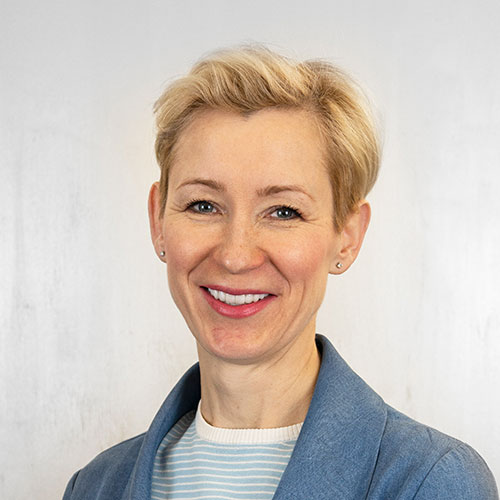
Sazonova Olga Viktorovna
Director of the Institute, Doctor of Medical Sciences, Associate Professor
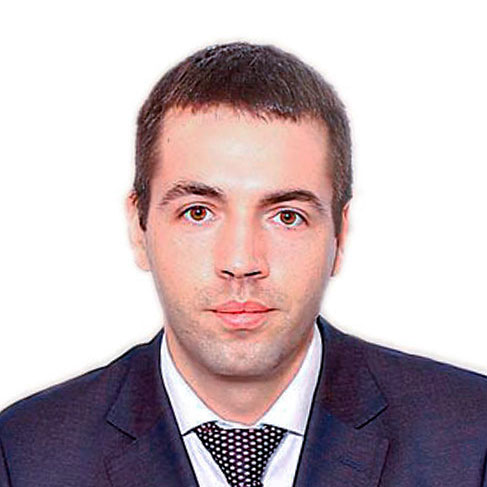
Gavryushin Mikhail Yurievich
Deputy Director, Candidate of Medical Sciences
Directorate
443099, Samara, st. Chapaevskaya, 89
+7 846 374-10-04 ext. 4982
Mon-Thu – from 15 to 18, Fri – from 15 to 17 Sat-Sun – days off
For students
Multifunctional Center (MFTSO)
Mon-Fri – from 9 to 17:30 (lunch – from 13 to 14)
Sat-Sun – days off
Applicants >
In contact with >

Class schedule for the fall semester 2022-2023 G.
(PDF, 2 MB)
About the institute
The training of specialists in the preventive direction of medicine at Samara State Medical University dates back to the 1930s of the last century, when training was conducted at the sanitary and preventive faculty of the Middle Volga Regional Medical Institute. In the future, until 1999, there was no training of medical and preventive specialists in our university. Despite this, many graduates devoted their activities to the preventive direction of medicine, and one of the most famous of them is the Minister of Health of the USSR G. A. Miterev. In 1999, a medical and preventive faculty was opened at Samara State Medical University.
At present, Russian healthcare is faced with the task of increasing life expectancy and reducing the mortality rate of the country’s population. An increase in life expectancy is associated with the prevention of age-related diseases. Priority national projects, in particular, the formation of a system of motivating citizens to a healthy lifestyle, the improvement and implementation of innovative methods of disease prevention, which form the basis of preventive medicine, prevention, early personalized diagnosis and therapy, should become the main tools for achieving these goals.
From February 2020, the Institute of Preventive Medicine begins its work at Samara State Medical University under the guidance of Doctor of Medical Sciences, Associate Professor Sazonova Olga Viktorovna. Its activities are aimed at solving the main tasks of integrating Samara State Medical University into the international educational and scientific space, including through the training of high-class specialists who are in demand not only in the country, but also abroad.
The global mission of the Institute of Preventive Medicine is “Creating the preventive medicine of the future by developing high technologies and preserving the traditions of academic education and science for sustainable development, training of highly qualified specialists and improving the health and quality of life of people.”
The main tasks of the Institute are:
implementation of a multi-level system for training highly qualified specialists with higher medical education in the specialty 32.05.01 Medical and preventive care;
improving the quality of training of specialists in medical and preventive areas with higher professional education, taking into account modern requirements of medicine;
organization and improvement of work practice, introduction of new preventive technologies for students;
training of scientific and pedagogical staff of Samara State Medical University;
organization of educational-methodical, research and educational work among scientific and pedagogical workers and students of Samara State Medical University;
development of fundamental and applied research in the profile of the Institute and the organization of the implementation of the results of scientific research in the educational process of Samara State Medical University and practical healthcare;
providing medical assistance to the population on the prevention of alimentary-dependent diseases;
implementation of international scientific cooperation with educational, research and medical foreign organizations;
organization of conditions for the formation of a healthy lifestyle and the dissemination of medical knowledge among students and the population;
preservation and enhancement of the moral, cultural and scientific values of society.
The implementation of educational, research and medical activities of the institute contributes to the solution of the tasks set.
Educational activities
The Institute of Preventive Medicine implements a multi-level system for training preventive specialists. In training, a practice-oriented approach is used to form the competencies of a specialist. The curriculum for preparing a future graduate is updated annually based on monitoring the needs of future employers and the labor market: in 2022, an educational and research laboratory of molecular biology was opened on the basis of the institute and the internship “Assistant to Medical Microbiologist” was introduced into the educational process.
pre-university
Pre-University – professional orientation of students of educational organizations.
Undergraduate education
Training in the specialty 32.05.01 “Medical and preventive work” is underway.
Qualification (degree) of the graduate: doctor in general hygiene, in epidemiology.
Duration of study: 6 years.
Education at the initial stage of undergraduate education is carried out in introductory, special, clinical, general medical and fundamental disciplines.
The training of preventive doctors at the subsequent stages of undergraduate education includes the teaching of special disciplines at the departments that are part of the Institute:
Department of General and Molecular Biology ;
Department of General and Clinical Microbiology, Immunology and Allergology ;
Department of Physical Education and Health ;
Department of General Hygiene ;
department of food hygiene with a course of hygiene for children and adolescents ;
Department of Public Health and Public Health ;
department of infectious diseases with a course of epidemiology ;
occupational diseases and clinical pharmacology named after Honored Scientist of the Russian Federation Professor VV Kosarev .
Training in the specialty “Medical and preventive care” is carried out with the participation of the head of the Office of Rospotrebnadzor in the Samara region S. V. Arkhipova , the head physician of the FBUZ “Center for Hygiene and Epidemiology in the Samara Region” L. V. Chupakhina and the heads of specialized departments. The industrial practice of students of the institute takes place at the departments of special disciplines of the Samara State Medical University, in the institutions of Rospotrebnadzor, as well as medical organizations of the Samara region. Particular attention in the training of specialists is paid to research work, which the students of the institute carry out under the guidance of scientific and pedagogical workers of the departments of the Samara State Medical University.
As a result of successful completion of the final state attestation at the end of 6 years of study at the institute, by the decision of the state attestation commission, graduates are awarded the qualification “Doctor in the specialty” medical and preventive care ” .
Primary accreditation of specialists
The Institute of Preventive Medicine organizes the preparation of graduates for the primary accreditation of specialists on the basis of the multi-profile accreditation and simulation center of the Samara State Medical University . Successful completion of the primary accreditation procedure gives the right to carry out medical activities in the positions of “ General Hygiene Doctor ”, “ Epidemiologist ”;
Institute graduates can receive higher professional education by completing residency at the Institute of Vocational Education in the following specialties: ” General Hygiene “, ” Epidemiology “, ” Clinical Laboratory Diagnostics “”. Residency training in the specialty “General Hygiene” allows further training in such preventive specialties as “Food Hygiene”, “Hygiene of Children and Adolescents”, “Occupational Health”, “Hygienic Education”, “Communal Hygiene”, “Radiation Hygiene”. ”, “Sanitary and hygienic laboratory research”, “Social hygiene and organization of the state sanitary and epidemiological service”. Residency training in the specialty “Clinical Laboratory Diagnostics” provides an opportunity for further in-depth training in bacteriology, virology, laboratory mycology and laboratory genetics.
Training under residency programs can be carried out at the expense of the federal budget upon admission through a general competition and within the target quota, as well as under an agreement on the provision of paid educational services. The training of a specialist in residency provides for training at specialized departments with practice at the places of future professional activity in the institutions of Rospotrebnadzor and medical organizations in the Samara region.
Specialized accreditation
Upon completion of residency training, as well as at the expiration of the certificate, specialists in preventive medicine undergo a specialized accreditation procedure. The Institute of Preventive Medicine of the Samara State Medical University provides organizational support for the procedure for passing specialized accreditation of preventive specialists.
Continuing Medical Education
The departments that are part of the institute, at the modern methodological level, implement additional professional programs for improving the qualifications of doctors in specialized areas.
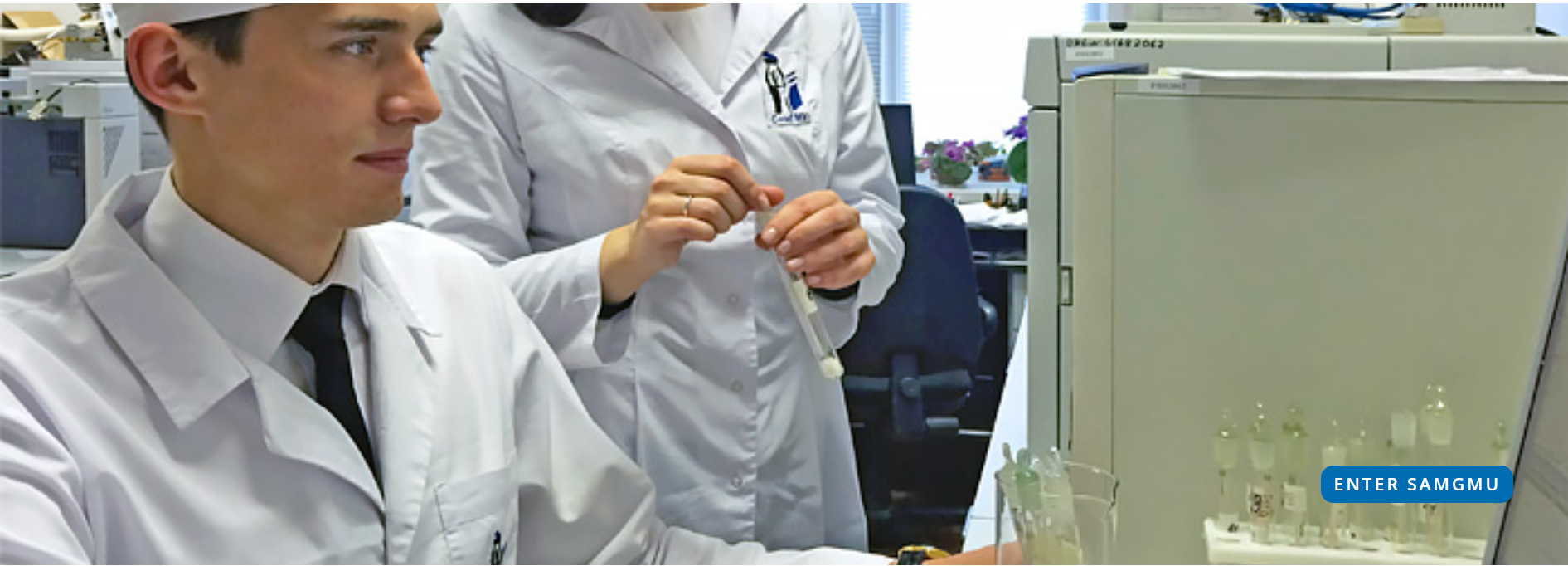
Research activities
The Institute of Preventive Medicine organizes and conducts scientific research in accordance with the priority areas of medical science and taking into account the profile of the departments that are part of the Institute. The research work of the departments of the Institute is coordinated by the Department of Scientific Research and Training of Scientific and Pedagogical Personnel.
Basic and applied research in the field of active longevity, epidemiological research in the field of nutrition and public health is carried out by the Research Institute of Hygiene , which is part of the Institute of Preventive Medicine.
The scientific work of the students of the institute is supervised by the Student Scientific Society of the Samara State Medical University . Meetings of student scientific circles are regularly held at the departments of the institute.
Medical activity
The therapeutic activity of the Institute of Preventive Medicine is aimed at organizing and providing highly qualified outpatient medical care at the modern level to patients with alimentary-dependent diseases using modern diagnostic and treatment methods on the basis of the Healthy Nutrition Consultative and Diagnostic Center .
Documentation
Regulations on the Institute
Mission of the educational program
Educational program in the specialty “Medical and preventive work” (full-time)
Curriculum for the specialty “Medical and preventive work” (full-time form)
Competency Compliance Matrix
Regulations on the Academic Council of the Institute
GEF in the specialty “Medical and preventive business”
Educational program in the specialty “Medical and preventive business” (part-time)
Curriculum for the specialty “Medical and preventive care” (part-time)
Content-logical connections of academic disciplines
Join us on social networks
© 1919 – 2023
Samara State Medical University of the Ministry of Health of Russia
+7 (343) 876-90-02 [email protected]
Selection committee
Contacts and details Information about the educational organization Countering corruption and terrorism
Appeals of citizens Partner Sites Personal data processing policy Site Map

Contacts and details
Contacts and details Information about the educational organization Countering corruption and terrorism Appeals of citizens Partner Sites Personal data processing policy Site Map
Important Update: At Northwestern Medicine safety is always a top priority. In response to the COVID-19 pandemic, Northwestern Medicine has moved to a more virtual recruitment process including telephone and video interviews to help ensure the health and safety of our employees, candidates, and communities. Also, some hiring activities may be delayed or suspended in certain geographic areas and job categories. Review the latest information about the virus .

Medical Assistant, Specialty Clinics
- $10,000 Tuition Reimbursement per year ($5,700 part-time)
- $10,000 Student Loan Repayment ($5,000 part-time)
- $1,000 Professional Development per year ($500 part-time)
- $250 Wellbeing Fund per year($125 for part-time)
- Matching 401(k)
- Excellent medical, dental and vision coverage
- Life insurance
- Annual Employee Salary Increase and Incentive Bonus
- Paid time off and Holiday pay
Pay Starting at: $18.50+ per hour based on experience
Northwestern Medicine is powered by a community of colleagues who are purpose-driven and committed to our mission to deliver world-class care. Here, you'll work alongside some of the best clinical talent in the nation leading the way in medical innovation and breakthrough research with Northwestern University Feinberg School of Medicine.
We recognize where you've been, and we support where you're headed. We celebrate diverse perspectives and experiences, which fuel our commitment to equity and culture of service.
Grow your career with comprehensive training and development opportunities, mentorship programs, educational support and student loan repayment.
- Create the life you envision for yourself with flexible work options, a Reimbursable Well-Being Fund and a Total Rewards package that support your physical, mental, emotional and financial well-being.
- Make a difference through volunteer opportunities we offer in local communities and drive inclusive change through our workforce-led resource groups.
From discovery to delivery, come help us shape the future of medicine.
Description
The Medical Assistant reflects the mission, vision, and values of Northwestern Medicine, adheres to the organization’s Code of Ethics and Corporate Compliance Program, and complies with all relevant policies, procedures, guidelines and all other regulatory and accreditation standards.
The Medical Assistant is a member of the health care team primarily responsible for providing support to physicians, nurses, and other licensed medical staff by facilitating efficient patient flow, assisting with various patient care activities, and performing related administrative functions. The Medical Assistant is responsible for ensuring efficient patient flow through the clinic; maintaining neat, clean and safe patient care areas; promoting patient satisfaction by interacting with patients in a professional, friendly manner; safeguarding patient confidentiality.
Responsibilities:
- Escorts patient to exam room, identifies patient with 2 identifiers and prepares patient for examination.
- Obtains accurate vital signs, per organization standards.
- Documents reason for visit and updates/confirms, allergies, smoking history and pharmacy information.
- Promptly informs the provider and registered nurse of any significant change in vital signs or acute symptoms.
- Anticipates/sets up equipment or supplies needed for visit.
- Cleans and prepares exam room for next patient.
- Responds to needs to expedite visits and maintain flow of patients and prioritize tasks accordingly.
- Electrocardiogram (ECG), venipuncture, immunizations, setting up procedure trays, specimen collection and/or Clinical Laboratory Improvement Amendments (CLIA) waived testing as directed by Provider.
- Prepares and stocks all exam rooms in treatment area by following established protocols for disinfecting and sterilizing equipment and instruments.
- Participates in environmental safety rounds.
- Maintains vaccine/medication inventory.
- Monitors and maintains equipment and instruments according to clinic guidelines.
- Assists in ordering supplies and correctly disposes of all expired items.
- Adheres to office opening and closing procedures.
- Accepts and performs delegated responsibilities in a positive manner.
- Offers assistance to others.
- Attends and participates in staff meetings.
- Communicates appropriately and effectively with patients and patient care team (in the office and on the phone)
- Performs delegated procedures common to the specialty area in a safe, effective, and efficient manner (see specialty practice addendum)
- Performs all other duties as assigned by the Supervisor or Manager
Qualifications
- Candidate must have written proof of meeting candidate eligibility requirements for writing one of the five eligible certification exams (AAMA, AMT, NCCT, NHA, NRCMA)
- New MA Graduates within 6 months from date of graduation from an MA Program must submit: a letter from the school or a letter from the certifying body
- Non-Certified MAs or new graduates past 6 months from date of graduation from an MA program must submit: a letter from the certifying body
- Certified Medical Assistant (CMA) through American Association of Medical Assistants (AAMA)
- Registered Medical Assistant (RMA) through American Medical Technologists (AMT) or
- National Certified Medical Assistant (NCMA) through the National Center for Competency Testing (NCCT)
- Certified Clinical Medical Assistant (CCMA) through the National Healthcareer Association (NHA)
- Nationally Registered Certified Medical Assistant (NRCMA) through the National Association for Health Professionals (NAHP)
All Candidates/Incumbents:
- High school diploma or GED.
- American Heart Association accredited Basic Life Support (BLS/CPR) certification.
- Signed acknowledgement during onboarding that certification must be attained within 6months, as a condition of employment
- Strong computer skills.
Preferred :
- Completion of accredited Medical Assistant training program.
- One to two years of ambulatory care experience.
- Experience with electronic medical record.
Equal Opportunity
Northwestern Medicine is an affirmative action/equal opportunity employer and does not discriminate in hiring or employment on the basis of age, sex, race, color, religion, national origin, gender identity, veteran status, disability, sexual orientation or any other protected status.
Share This Job
Featured jobs, recently viewed jobs.
You do not have any recently viewed jobs
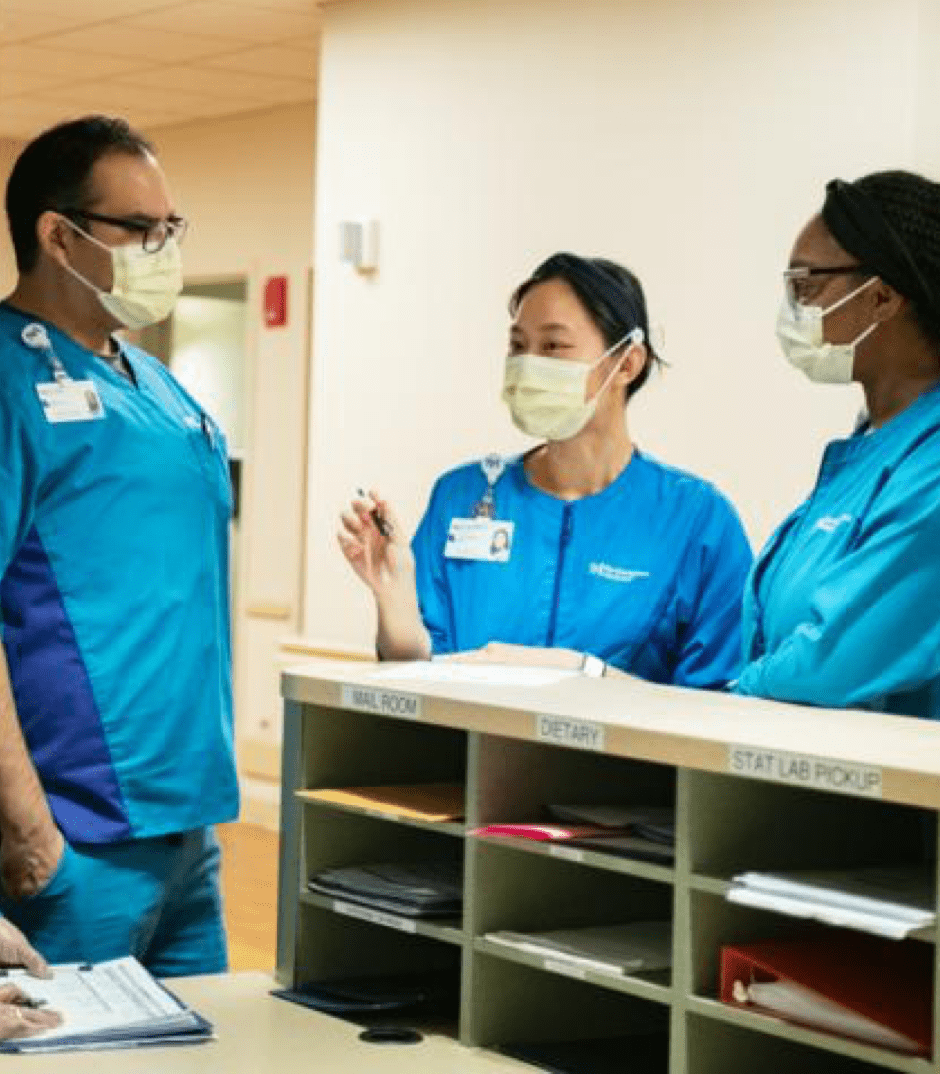
Nursing Opportunities
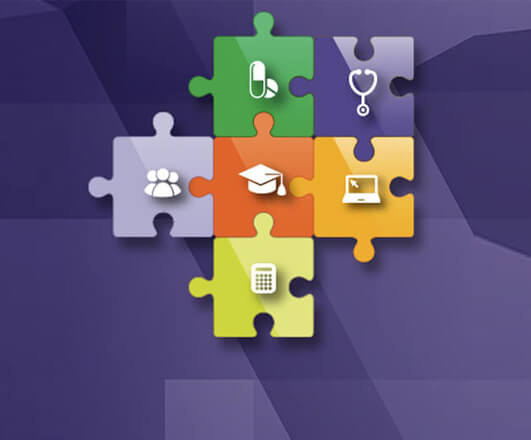
Information Services Careers
Medical Assistant II - Medicine Specialties - 128513
Job description, #128513 medical assistant ii - medicine specialties.
Please note that this position is a part-time appointment
UCSD Layoff from Career Appointment : Apply by 03/06/2024 for consideration with preference for rehire. All layoff applicants should contact their Employment Advisor.
Special Selection Applicants : Apply by 03/18/2024. Eligible Special Selection clients should contact their Disability Counselor for assistance.
DESCRIPTION
Under direct supervision of the clinic manager and the general supervision of the clinic providers and licensed nursing staff, performs work which requires specific knowledge and training in patient care duties within business and professions code of the State of California and/or the regulations The Joint Commission (TJC).
These duties also include but are not limited to: scheduling of patient appointments and associated patient system screens; accurate billing; environmental care functions; equipment/supply management; and cleaning/disinfecting the environment. Requires knowledge of medical terminology, on-line scheduling, universal precautions, and proper use of body mechanics. Position requires initiative, the ability to prioritize demands and the ability to work in a team environment.
MINIMUM QUALIFICATIONS
Certified Medical Assistant (CMA) OR Certificate of completion of a Medical Assistant training program.
BART or BLS at time of hire with commitment to get BART within six (6) months of hire date.
Medical terminology training or certificate.
Requires knowledge of medical terminology, on-line scheduling, universal precautions, and proper use of body mechanics.
Demonstrated ability to take initiatives, prioritize demands and work in a team environment.
PREFERRED QUALIFICATIONS
- Experience working with Hepatology, Nephrology, Allery and/or Arthritis outpatient clinics.
- Experience processing referrals and authorizations in the managed care market.
SPECIAL CONDITIONS
- Must be able to work various hours and locations based on business needs.
- Employment is subject to a criminal background check and pre-employment physical.
Pay Transparency Act
Annual Full Pay Range: $50,321 - $62,640 (will be prorated if the appointment percentage is less than 100%)
Hourly Equivalent: $24.10 - $30.00
Factors in determining the appropriate compensation for a role include experience, skills, knowledge, abilities, education, licensure and certifications, and other business and organizational needs. The Hiring Pay Scale referenced in the job posting is the budgeted salary or hourly range that the University reasonably expects to pay for this position. The Annual Full Pay Range may be broader than what the University anticipates to pay for this position, based on internal equity, budget, and collective bargaining agreements (when applicable).
If employed by the University of California, you will be required to comply with our Policy on Vaccination Programs, which may be amended or revised from time to time. Federal, state, or local public health directives may impose additional requirements. If applicable, life-support certifications (BLS, NRP, ACLS, etc.) must include hands-on practice and in-person skills assessment; online-only certification is not acceptable.
UC San Diego Health is the only academic health system in the San Diego region, providing leading-edge care in patient care, biomedical research, education, and community service. Our facilities include two university hospitals, a National Cancer Institute-designated Comprehensive Cancer Center, Shiley Eye Institute, Sulpizio Cardiovascular Center, the only Burn Center in the county, and and dozens of outpatient clinics. We invite you to join our team!
Applications/Resumes are accepted for current job openings only. For full consideration on any job, applications must be received prior to the initial closing date. If a job has an extended deadline, applications/resumes will be considered during the extension period; however, a job may be filled before the extended date is reached.
To foster the best possible working and learning environment, UC San Diego strives to cultivate a rich and diverse environment, inclusive and supportive of all students, faculty, staff and visitors. For more information, please visit UC San Diego Principles of Community .
UC San Diego is an Equal Opportunity/Affirmative Action Employer. All qualified applicants will receive consideration for employment without regard to race, color, religion, sex, sexual orientation, gender identity, national origin, disability, age or protected veteran status.
For the University of California’s Affirmative Action Policy please visit: https://policy.ucop.edu/doc/4010393/PPSM-20 For the University of California’s Anti-Discrimination Policy, please visit: https://policy.ucop.edu/doc/1001004/Anti-Discrimination
UC San Diego is a smoke and tobacco free environment. Please visit smokefree.ucsd.edu for more information.
UC San Diego Health maintains a marijuana and drug free environment. Employees may be subject to drug screening.
Application Instructions
Please click on the link below to apply for this position. A new window will open and direct you to apply at our corporate careers page. We look forward to hearing from you!
Share This Page
Posted : 4/24/2024
Job Reference # : 128513
JOIN OUR TALENT COMMUNITY
Interested in working at UC San Diego and UC San Diego Health but can't find a position that's right for you? Submit your resume to our Talent Community to be considered for future opportunities that may align with your expertise. Please note, by joining our Talent Community, you are not applying for a position with UC San Diego Campus and Health. Rather, this is an additional way for our Talent Acquisition team to find candidates with specific credentials, if an opportunity arises. You are still encouraged to regularly check back on our career site or sign up for Job Alerts to apply for openings that are a match for your background.
- Career Sites by Recruiting.com
- OUR MISSION
- STRATEGIC PLAN
- COLLEGE GOVERNANCE
- WHAT IS OSTEOPATHIC MEDICINE?
- FACTS AND FIGURES
- OUR THREE SITES
- DIVERSITY, INCLUSION AND SAFETY
- CLINICAL OUTREACH
- INTERNATIONAL OPPORTUNITIES
- LEARNING AND ASSESSMENT CENTER
- GRADUATE MEDICAL EDUCATION
- OUR COMMUNITIES
- COMMON GROUND PROFESSIONALISM INITIATIVE
- ACCREDITATION
- CONTACT INFORMATION
- COMPLIMENTS AND CONCERNS
- WHY MSU COLLEGE OF OSTEOPATHIC MEDICINE?
- DUAL DEGREE PROGRAMS
- PA MEDICINE PROGRAM
- GLOBAL HEALTH STUDIES
- PATHWAY PROGRAMS
- ONBOARDING TIMELINE
- FINANCIAL AID AND SCHOLARSHIPS
- SITE SELECTION
- TECHNOLOGY REQUIREMENTS & RECOMMENDATIONS
- PREMATRICULATION CHECKLIST
- DISABILITY SERVICES
- PRECLERKSHIP MEDICAL EDUCATION
- CLERKSHIP MEDICAL EDUCATION
- CLASS-SPECIFIC INFORMATION
- COLLEGE OF OSTEOPATHIC MEDICINE REGISTRAR
- ACADEMIC AND CAREER ADVISING
- STUDENT AFFAIRS
- STUDENT HANDBOOK AND COURSE CATALOG
- MSUCOM MERCHANDISE STORE
- CONVOCATION
- COMMENCEMENT
- GET INVOLVED
- STAY CONNECTED
- MICHIGAN OSTEOPATHIC COLLEGE FOUNDATION
- DEGREE, LICENSURE, AND VERIFICATION
- ANNUAL REPORT
- DEAN’S UPDATE
- COLLEGE NEWS
- SPARTANDO JOURNEYS
- SPARTANDO IN THE NEWS
- SPARTANDO EXPERT TAKE
- COVID-19 INFORMATION
- PATENGE MEDAL OF PUBLIC SERVICE
- IN MEMORIAM
- Faculty/Staff Directory
- Departments
- Research & Scholarly Activity
- Continuing Medical Education
Michigan State University
College of osteopathic medicine, msu omm clinic continues to serve, expand 40 years later.
MSU Health Care Osteopathic Manipulative Medicine comes from humble beginnings, but has grown to accommodate a hefty caseload. What started during the 1980s in the basement of Lansing General Hospital’s professional building eventually expanded to the third floor of the hospital. It later moved to MSU’s Clinical Center before settling at its current location at 4660 S. Hagadorn Road, Suite 500.
“The numbers are daunting,” said Reddog Sina, D.O., assistant professor of Osteopathic Manipulative Medicine at the MSU College of Osteopathic Medicine, who is board-certified in Neuromusculoskeletal Medicine and Osteopathic Manipulative Medicine (NMM/OMM), and sees patients daily at MSU Health Care OMM. These are busy days at the clinic. In 2023 alone, the clinic had 33,550 appointments. Patients range from newborns to centenarians seeking non-surgical treatment for a wide range of arthrodial and neuromuscular conditions including feeding issues, torticollis, neck pain, back pain, joint and muscle pain, headaches and temporomandibular joint dysfunction (commonly referred to as TMJ).
Through it all, MSU Health Care OMM has stayed true to its mission “to maintain a model of osteopathic medical practice, provide leadership in the transformation and promotion of osteopathic principles, and contribute to osteopathic philosophy’s biological, behavioral and clinical science foundation.”
Medical Practice
After being referred by their primary care providers, patients with wide-ranging conditions seek treatment at MSU Health Care OMM. “Our patients are already under the care of a primary care provider, and we are consulted for our expertise in neuromusculoskeletal medicine,” said J’Aimee Lippert, D.O., who is one of the clinic’s physicians, as well as the interim chair and an associate professor for the MSU College of Osteopathic Medicine’s Department of Osteopathic Manipulative Medicine. “We emphasize to patients that maintaining good contact with their primary care provider is important – we value that relationship! When a patient is referred to OMM, it is because of our expertise in the optimal function of the neuromusculoskeletal system.”
Once referred, patients at MSU Health Care OMM receive care that considers more than their signs and symptoms. “Learning OMM teaches trainees to palpate (examine through touch), and osteopathic physicians are the doctors that palpate. Touch is incredibly sensitive, and can be trained to differentiate very different tissue conditions that aren’t obvious by only using observation,” Dr. Sina explained. “We learn to look at our patients through the physical, spiritual and mental approaches to their lives. Our practice helps to integrate those things.”
Educational Outreach
At MSU Health Care OMM, outreach comes in the form of medical education. In addition to undergraduate and D.O. students from MSU, the clinic hosts high school students, visiting undergraduate and medical students and visiting residents. These opportunities demonstrate how osteopathic manipulative medicine works in real patient care. Dr. Lippert noted this experience is especially valuable for students.
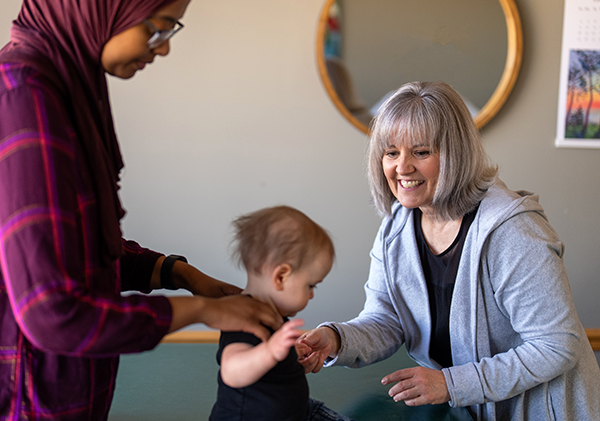
“Those students who come to shadow us or do rotations in the clinic really get to see the power – the clinical impact of using our hands. They also have critical opportunities to apply their knowledge in clinical environments during primary care preclerkship courses, throughout clerkship rotations and during extracurricular and cocurricular experiences, such as Student OMM Clinic, Street Medicine and Sports OMT.”
Clinical Research
Doctors at MSU Health Care OMM often publish case studies that contribute to broader research efforts. In a recently published study , for example, Dr. Sina detailed how, in one adult patient experiencing sudden-onset hearing loss from no discernible cause, he used manipulative medicine to open up the patient’s eustachian tube, which connects the ear to the nasopharynx.
In addition to clinical studies, MSU Health Care OMM also produces original projects and quality improvement studies. Of special note is MSU’s Center for Neuromusculoskeletal Clinical Research (CNCR). This lab houses a special treadmill equipped with motion-capture technology to conduct gait research, as well as equipment for concussion research. The CNCR assists researchers in evaluating skeletal motion gait in individuals, which can then be compared to larger populations, such as people with chronic back pain. The lab’s state-of-the-art equipment also makes it a strong candidate for facilitating research partnerships.
Looking Ahead
MSU Health Care OMM is reputed to be the largest OMM clinic in the world. While it carries an impressive caseload, the clinic’s size also measures the fact that the osteopathic neuromusculoskeletal specialty – the doctors who focus on OMM – is among the smallest osteopathic specialties.
“We have the biggest clinic in the country, but as a specialty across the nation, we’re very small,” Dr. Lippert explained. “For many patients, this is all quite novel, and understanding how their body functions can be a new concept.”
Dr. Lippert explained that during an appointment, osteopathic doctors evaluate how a patient’s body moves, identify areas that are moving well and those that are not and connect that information to the patient’s work, hobbies and past experiences. Osteopathic physicians can then use osteopathic manipulative treatment to address areas of concern.
“The very idea that we can use our hands to improve function and mobility, which can help them breathe, circulate, think and perform better, is often a revelation,” said Dr. Lippert. “This message needs to be widely shared. We have a very real opportunity to share what osteopathic medicine contributes to the health of all communities, and we take that obligation and responsibility very seriously.”
The osteopathic medical field is growing. According to the American Osteopathic Association, nearly 149,000 osteopathic physicians were in practice in 2023 , which measured a 30 percent increase since 2018. Today, more than 11 percent of physicians are osteopathic doctors, and 25 percent of all medical students in the U.S. study osteopathic medicine.
Open for enrollment: MSU’s current osteopathic manipulative medicine/treatment (OMM/OMT) clinical studies
- Prospective participants: please contact [email protected]
- Prospective participants: please contact [email protected]
- Prospective participants: please contact [email protected]
- Prospective participants: please contact [email protected]
By E. LaClear
- Outreach and Engagement
- Faculty/Staff

IMAGES
VIDEO
COMMENTS
The ISTM is the largest organization of professionals dedicated to the advancement of the specialty of travel medicine. Focused on the prevention and management of health problems related to international travel and migration, members include physicians, nurses, pharmacists and other health professionals from academia, government and the ...
Before your trip. Schedule an appointment for a pretravel consultation with a Mayo Clinic travel medicine clinic well before you depart so the travel medicine specialist can help you prepare. Ideally, this appointment would occur as soon as travel plans are established and at least two weeks — and preferably 4-8 weeks — before departure.
Travel medicine can primarily be divided into four main topics: prevention (vaccination and travel advice), assistance (dealing with repatriation and medical treatment of travelers), wilderness medicine (e.g. high-altitude medicine, cruise ship medicine, expedition medicine, etc.) and access to health care, provided by travel insurance .
Penn Travel Medicine has more than 25 years experience in providing health and safety resources to international travelers. Headed by a medical team that specializes in travel medicine and tropical diseases, the team provides services for international travelers, including guidelines for adapting to climate and altitude changes, health and political warnings for your targeted destination ...
Travel medicine and international health is a specialized branch of medicine that focuses on the prevention, diagnosis, and management of health issues related to international travel and global health. It aims to promote the well-being of travelers by providing pre-travel consultations, vaccinations, prophylactic medications, and post-travel care for various travel-related illnesses and ...
Medicare: 1-800-MEDICARE ( 1-800-633-4227) PreferredOne: 763-847-4477 (in the Twin Cities); 800-997-1750 (outside the metro area) United Healthcare: 877-842-3210. Stay healthy during international travel with our team of travel medicine experts at HealthPartners and Park Nicollet. We offer travel vaccinations, health counseling and more.
Adding a consultation to your travel to-do list. A consultation with a travel medicine specialist includes discussing travel-related illnesses, risk factors for infectious and noninfectious diseases, required immunizations, health regulations and drug-resistant organisms you may encounter. It's crucial to schedule a pretravel consultation at ...
A consultation with a travel medicine specialist includes discussing travel-related illnesses, risk factors for infectious and noninfectious diseases, required immunizations, health regulations and drug-resistant organisms you may encounter. It's crucial to schedule a pretravel consultation at least two weeks or preferably, four to eight weeks ...
The Conference of the International Society of Travel Medicine (CISTM) is the largest biennial gathering of travel medicine professionals. Typically alternating between Europe and North America, each CISTM provides opportunities for medical professionals to advance their specialty of travel medicine through plenary, symposium, and workshop ...
Main message. Travel medicine is a highly dynamic specialty that focuses on pretravel preventive care. A comprehensive risk assessment for each individual traveler is essential in order to accurately evaluate traveler-, itinerary-, and destination-specific risks, and to advise on the most appropriate risk management interventions to promote health and prevent adverse health outcomes during travel.
Main: (713) 572-8122. Fax: (713) 383-1462. CLINIC HOURS. Mon - Fri 8 a.m. - 5 p.m. Sat 8 a.m. - 12 p.m. UT Physicians offers a travel medicine clinic to residents in the Houston area but are looking to travel outside the country. Schedule today!
A travel medicine specialist shares his guide to health-conscious international travel for all ages and medical histories. ... Our Travel Medicine patients receive prescriptions for the correct antibiotic for the area they'll be visiting (some bacteria have become resistant) and are advised to bring the medicine on their trip since it may be ...
Travel Medicine. Eisenhower Health Center at Rimrock. 4791 E. Palm Canyon Drive. Palm Springs, CA 92264. 760-834-7930. More Information. Eisenhower Health's award-winning hospital offers state-of-art diagnostic, treatment and emergency care from outstanding doctors, surgeons and medical staff.
Travel medicine is a relatively new medical specialty, launched with the establishment of the International Society of Travel Medicine in 1991. Travel medicine's initial focus was research on travelers' diarrhea among mainly tourists and business travelers.
While travel medicine uses the combined evidence of several medical specialties to care for the health and wellbeing of travellers, tourism is much better in understanding them. Therefore, it is useful to take advantage of this knowledge to inform travel medicine and travel health clinicians' work now and in the post-pandemic future.
For appointments with a travel medicine physician or provider in Eau Claire, schedule with our infectious disease team. Find a physician or provider. P.O. Box 19070 • Green Bay, 54307. Prevea travel medicine is dedicated to keeping you healthy abroad by making sure you have the recommended vaccinations and any helpful advice.
Visit our Travel Medicine and immunization specialists so you stay healthy while traveling. To schedule an appointment at one of our Houston-area Kelsey-Seybold locations offering Travel Medicine, call 713-442-TRIP (8747) or complete this form. We'll respond to your request within a day during regular business hours.
Changes in health risks are closely monitored by the FirstHealth Travel Medicine Clinic staff allowing for up-to-date advice for each traveler. FirstHealth's Travel Medicine Clinic is located at 35 Memorial Drive in Pinehurst, N.C. To make an appointment, please call (910) 715-7883.
The Womack Army Medical Center Travel Clinic offers travel-related advice to help ensure travelers get the most out of their trip. Services are provided to dependent beneficiaries, retired service members, dependents accompanying active duty service members on permanent change of station (PCS) orders, and active duty Soldiers traveling on leave.
Dr. Waiel Samara, MD is an internal medicine specialist in Baltimore, MD and has over 32 years of experience in the medical field. He graduated from Damascus University Faculty of Medicine in 1991. He is affiliated with medical facilities such as Greater Baltimore Medical Center and MedStar Franklin Square Medical Center. He is accepting new patients and telehealth appointments.
A notable exception to the specialties using the MSRA in their recruitment process is Internal Medicine Training (IMT). There were 4406 applications to IMT in 2023, compared to 2539 for Core Surgical Training and 10 514 for General Practice [ 4 ].
Samaritan Specialty Pharmacy is accredited by both URAC and ACHC for compliance with a comprehensive set of national standards pertaining to Specialty Pharmacy services. Need a doctor? Call 800-863-5241. Hours: Monday through Friday, 8 a.m. to 5 p.m. or inquire online. Billing questions?
The global mission of the Institute of Preventive Medicine is "Creating the preventive medicine of the future by developing high technologies and preserving the traditions of academic education and science for sustainable development, training of highly qualified specialists and improving the health and quality of life of people.".
While the ethical conflicts discussed in medical school once focused primarily on patient privacy, end-of-life issues, and conflicts of interest with pharmaceutical companies, today, the list of ...
Specialties: Hematology Oncology, Medical Oncology. Search. Loading Complete. New search. Share. Print. Frederick ... Saint Louis University School of Medicine Medical Education, MD, 1973. ... American Board of Internal Medicine, 1979. Internal Medicine American Board of Internal Medicine, 1976. Johns Hopkins Physician, Clinician or Researcher: ...
Benefits. $10,000 Tuition Reimbursement per year ($5,700 part-time) $10,000 Student Loan Repayment ($5,000 part-time) $1,000 Professional Development per year ($500 part-time)
About SAMARA MCELROY. Samara Mcelroy is a primary care provider established in Saint Peters, Missouri and her medical specialization is Family Medicine with more than 14 years of experience. She graduated from Lake Erie College Of Osteopathic Medicine, Erie in 2010. The healthcare provider is registered in the NPI registry with number 1235431198 assigned on November 2010.
#128513 Medical Assistant II - Medicine Specialties Extended Deadline: Wed 5/1/2024. Apply Now. UC San Diego values equity, diversity, and inclusion. If you are interested in being part of our team, possess the needed licensure and certifications, and feel that you have most of the qualifications and/or transferable skills for a job opening, we ...
While it carries an impressive caseload, the clinic's size also measures the fact that the osteopathic neuromusculoskeletal specialty - the doctors who focus on OMM - is among the smallest osteopathic specialties. "We have the biggest clinic in the country, but as a specialty across the nation, we're very small," Dr. Lippert explained.
Find information about and book an appointment with Dr. Tao Wang, MD, PhD, MSC in Baltimore, MD. Specialties: Medical Genetics, Pediatric Genetics.